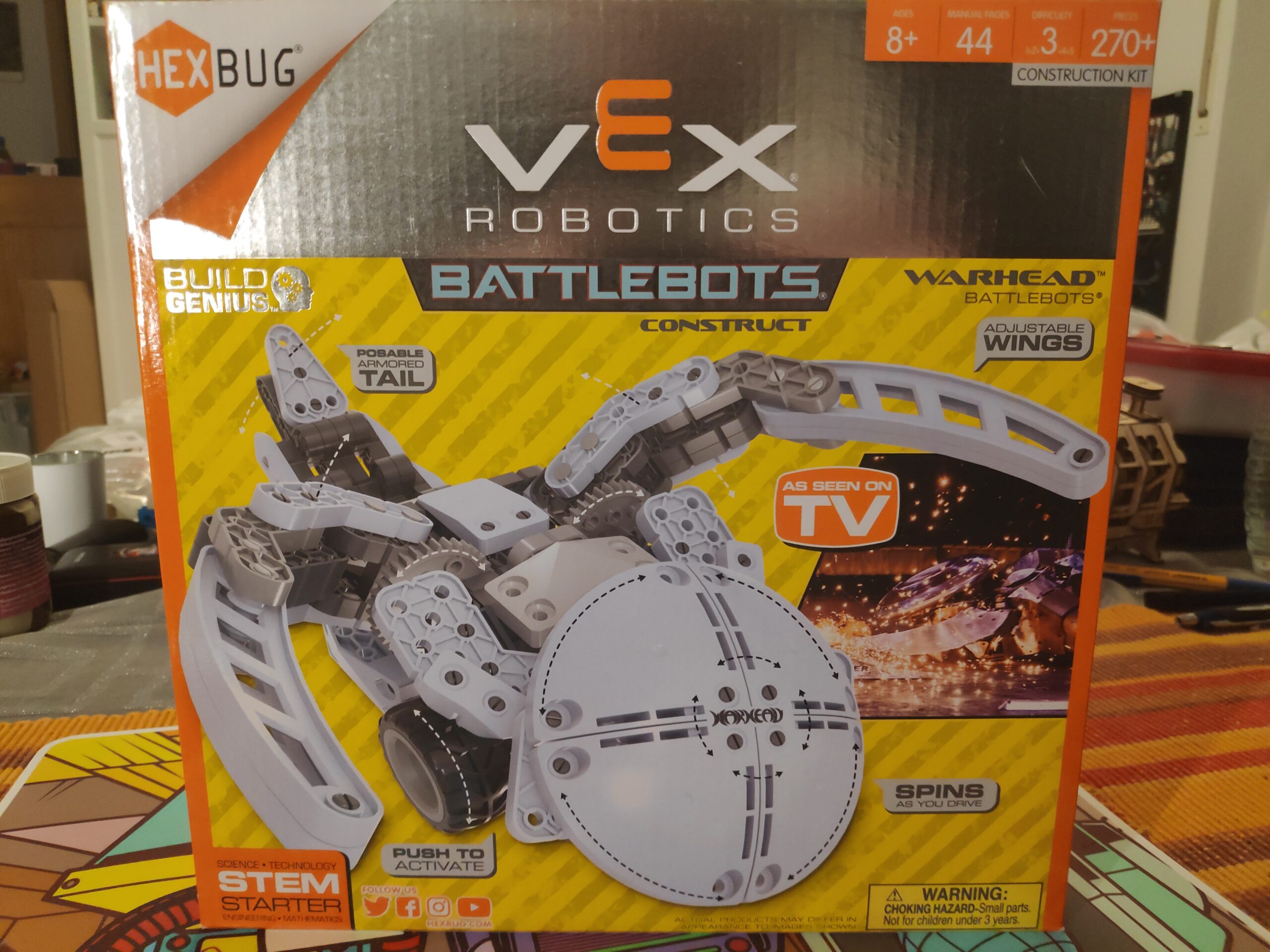
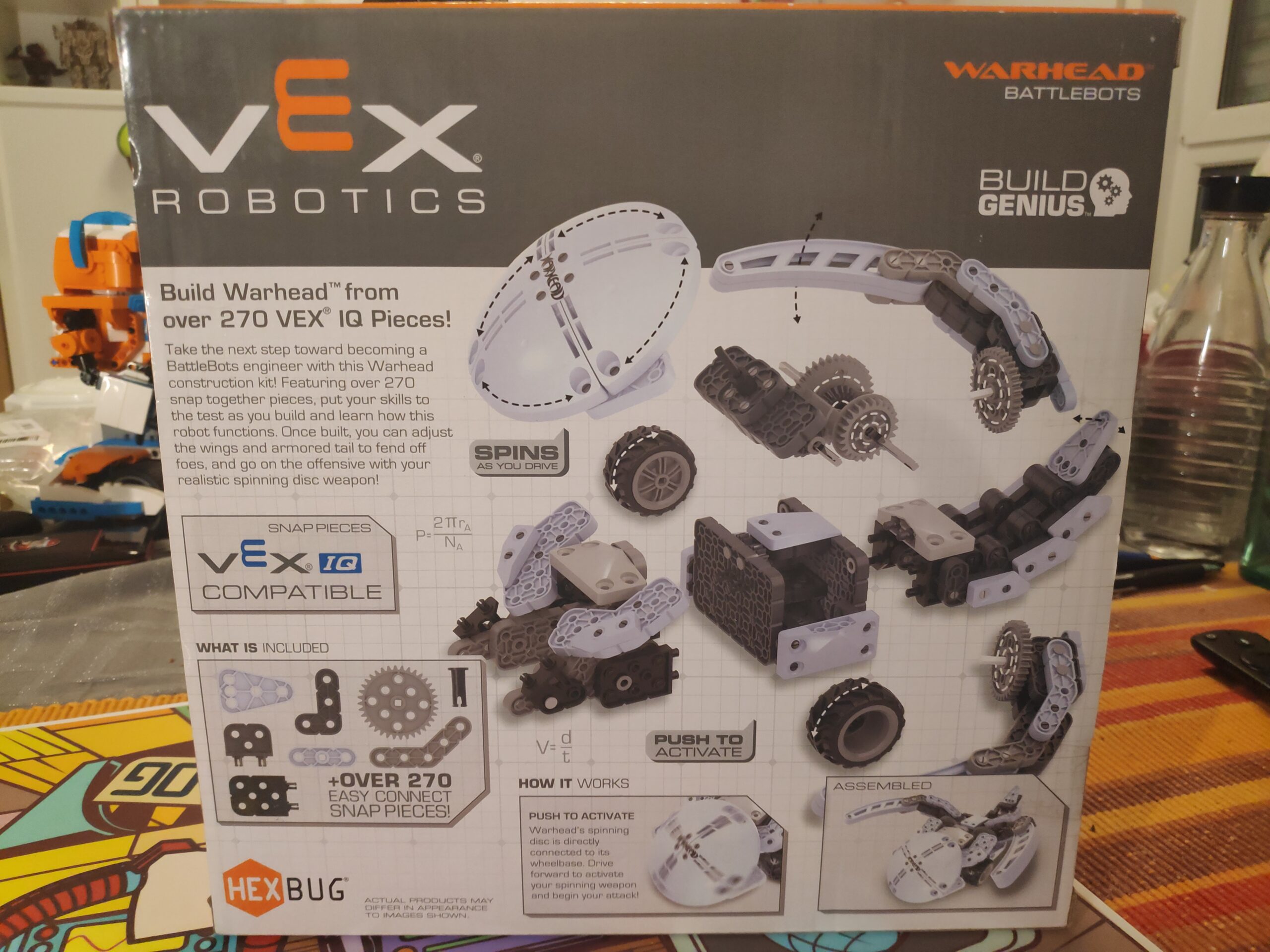
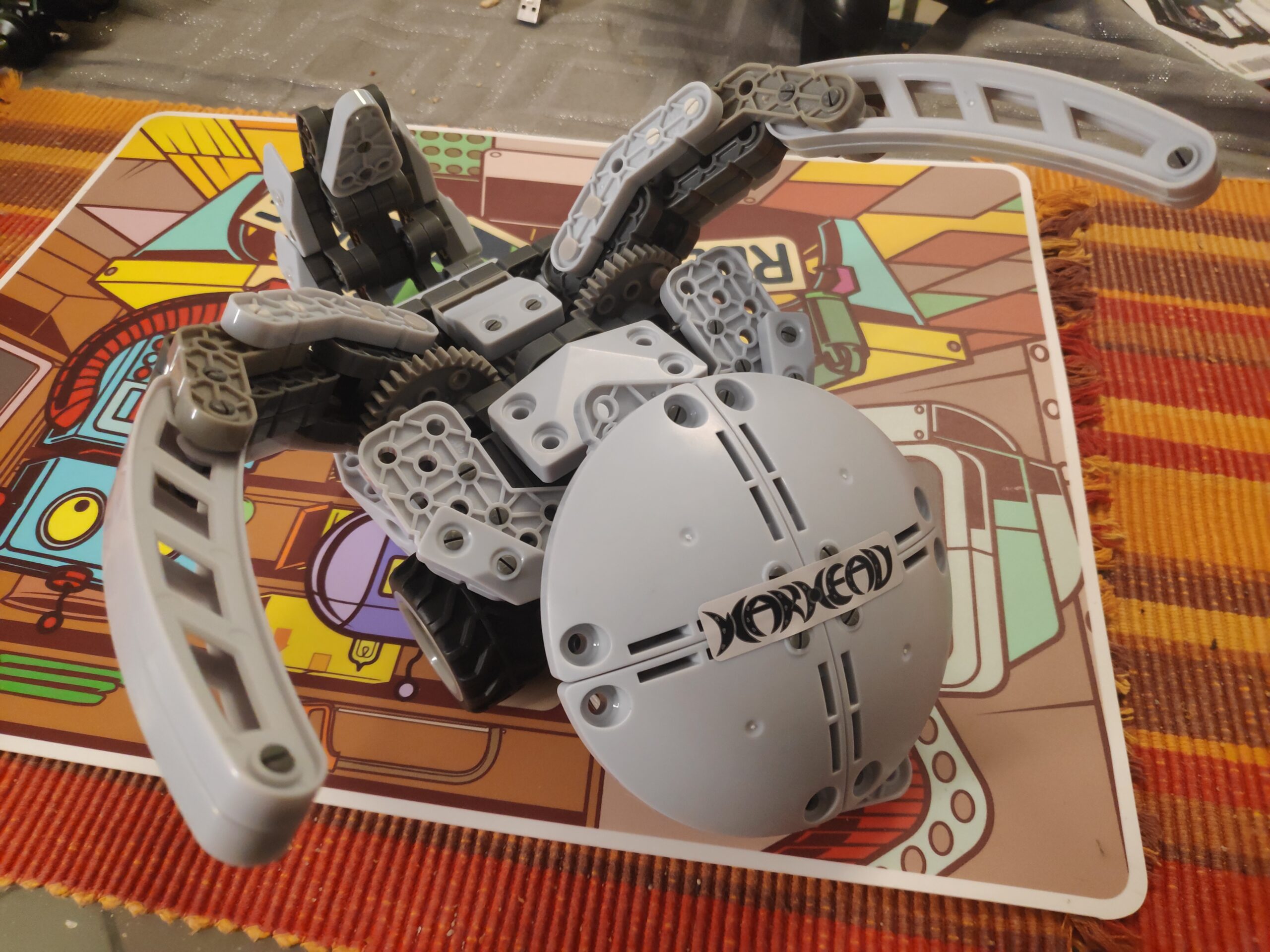
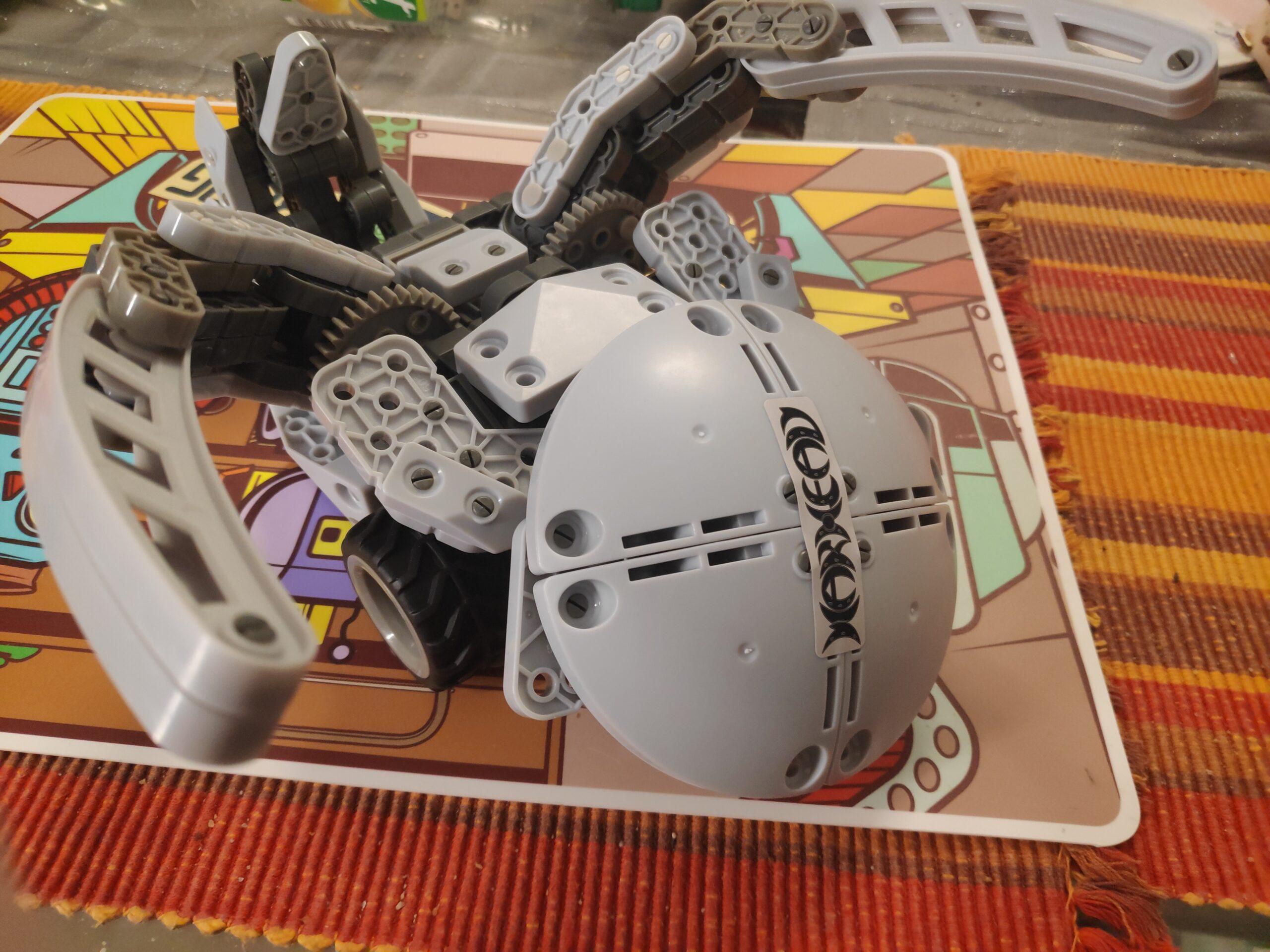
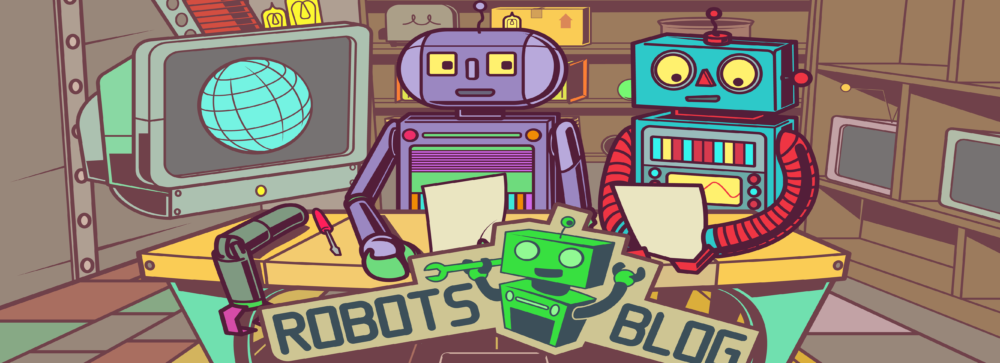




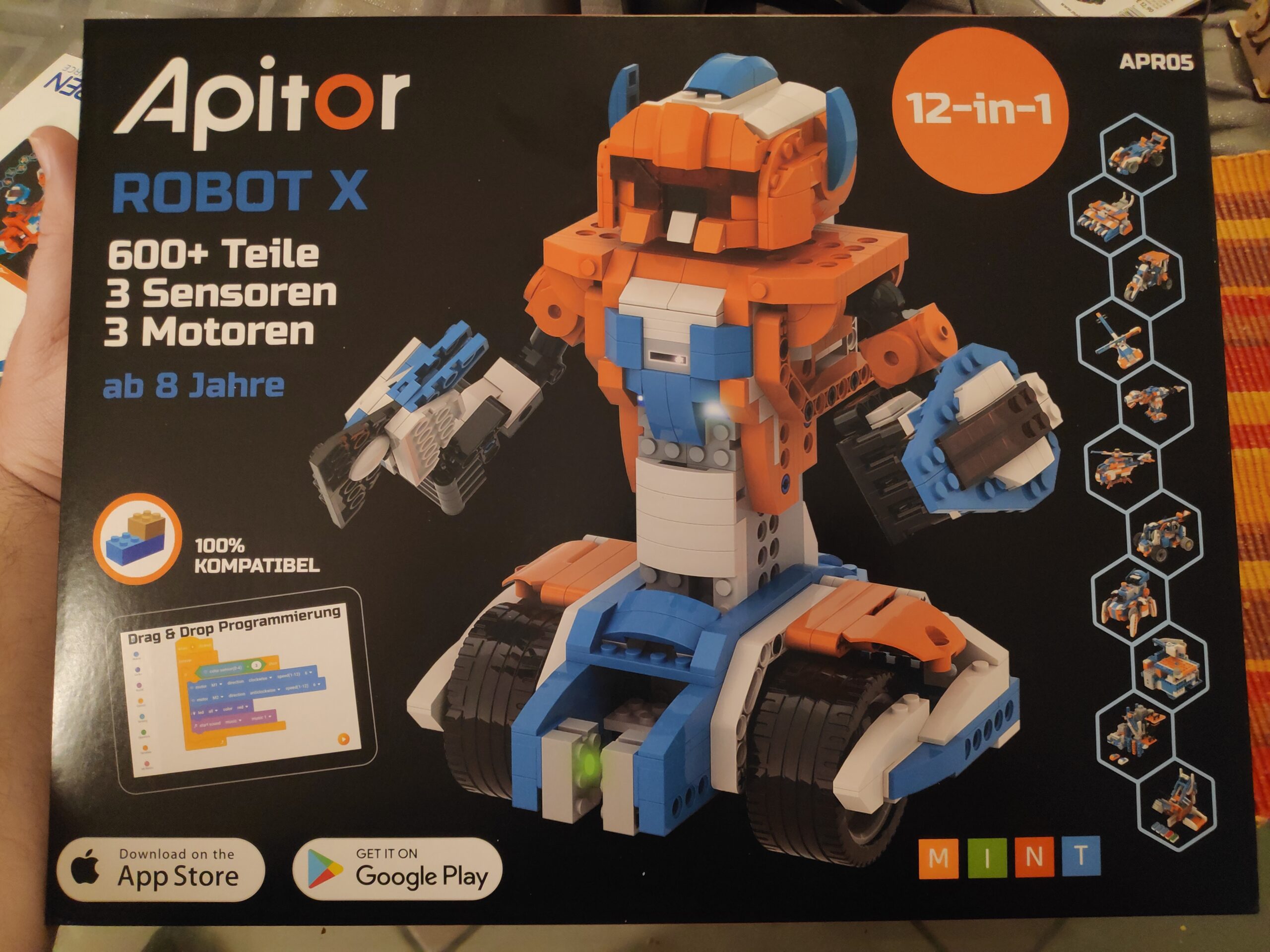
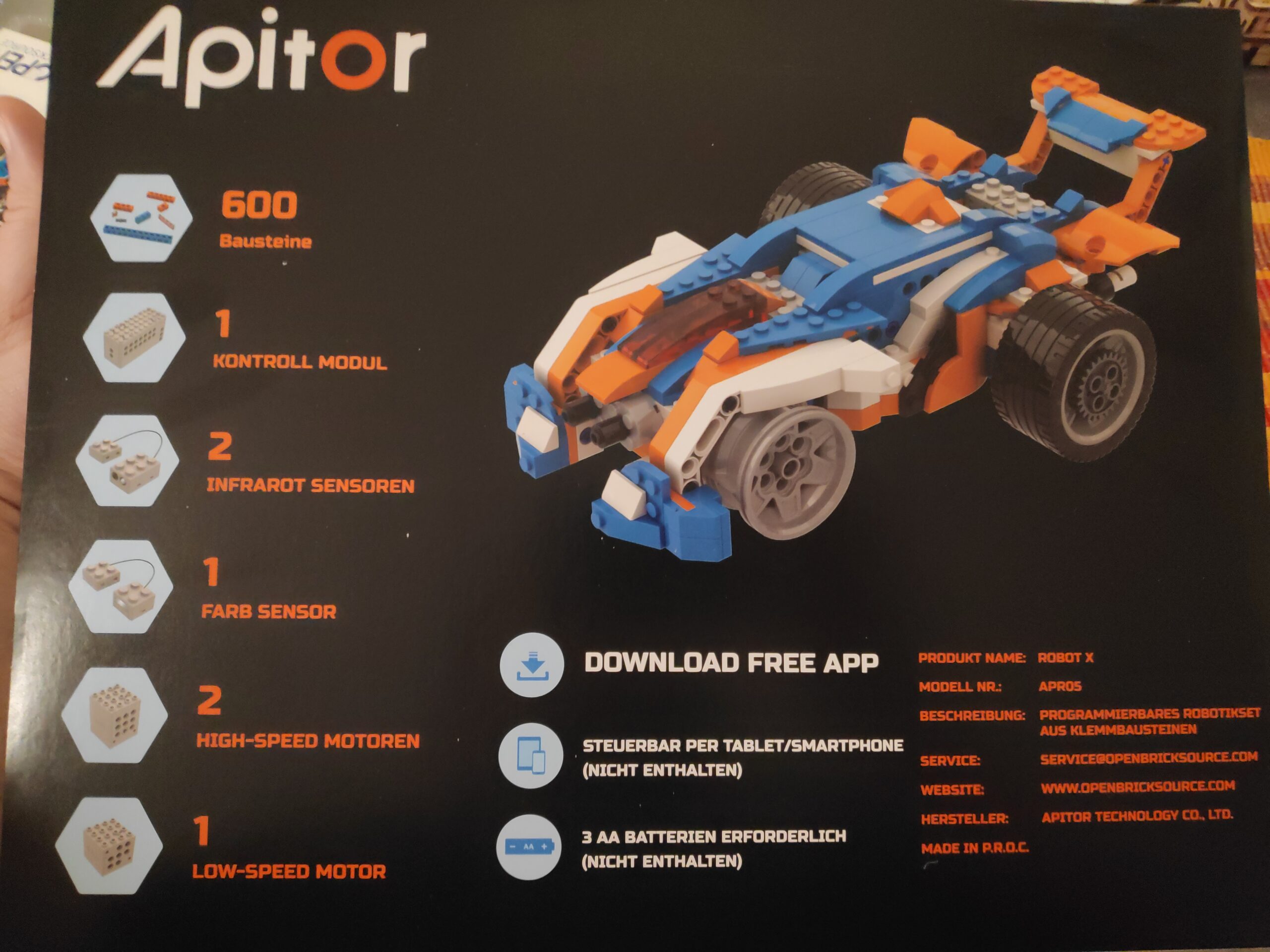
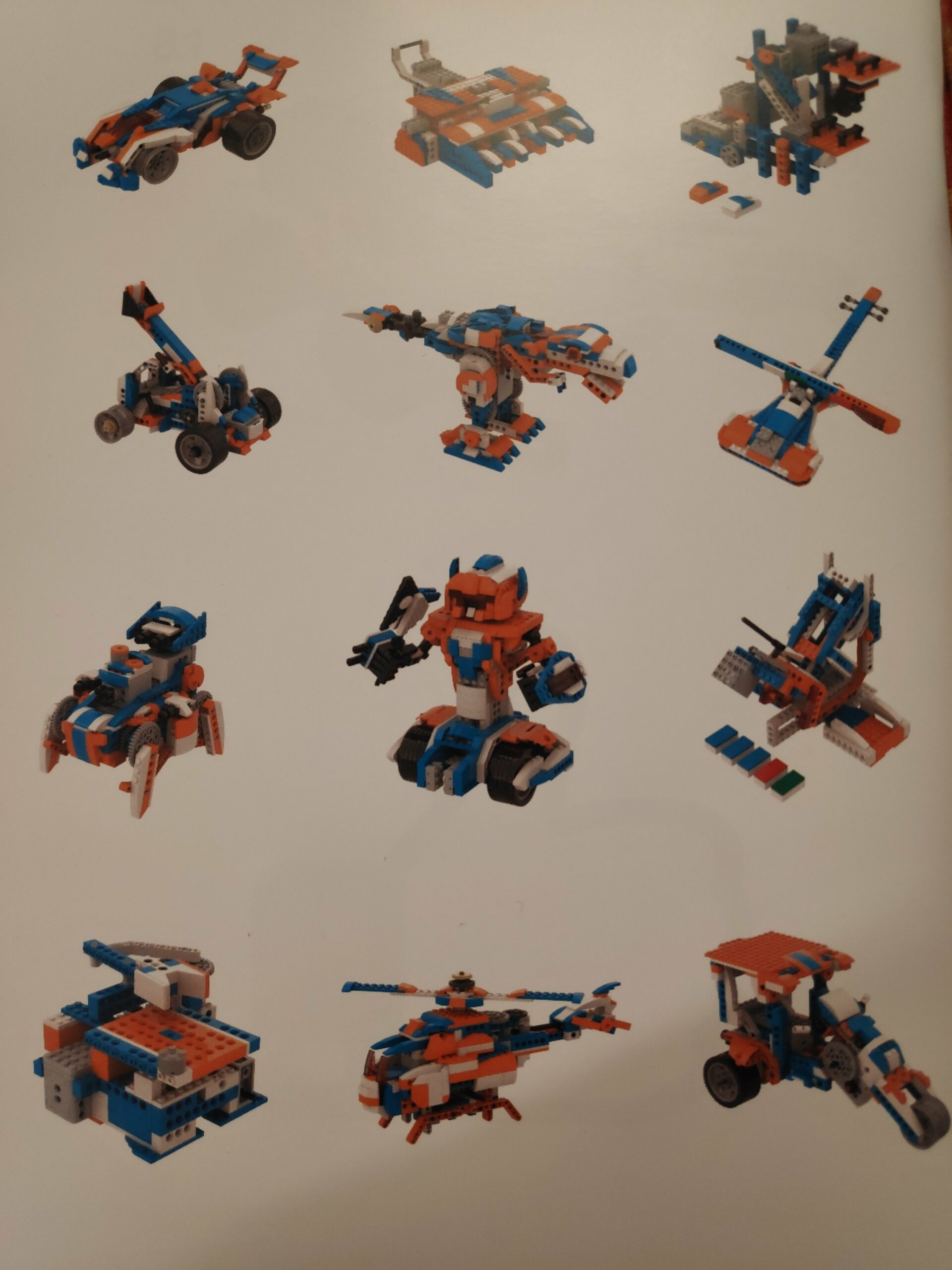
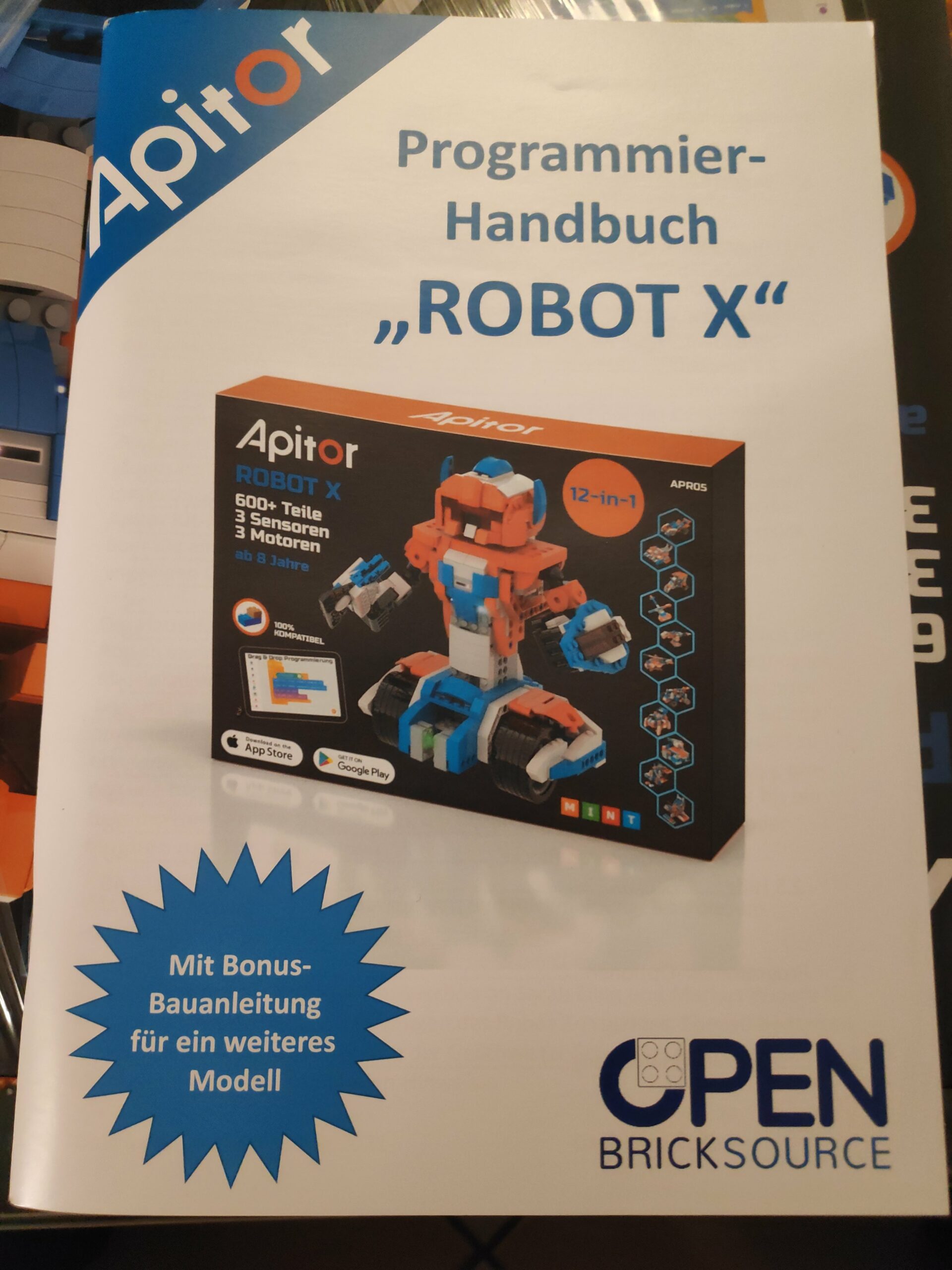
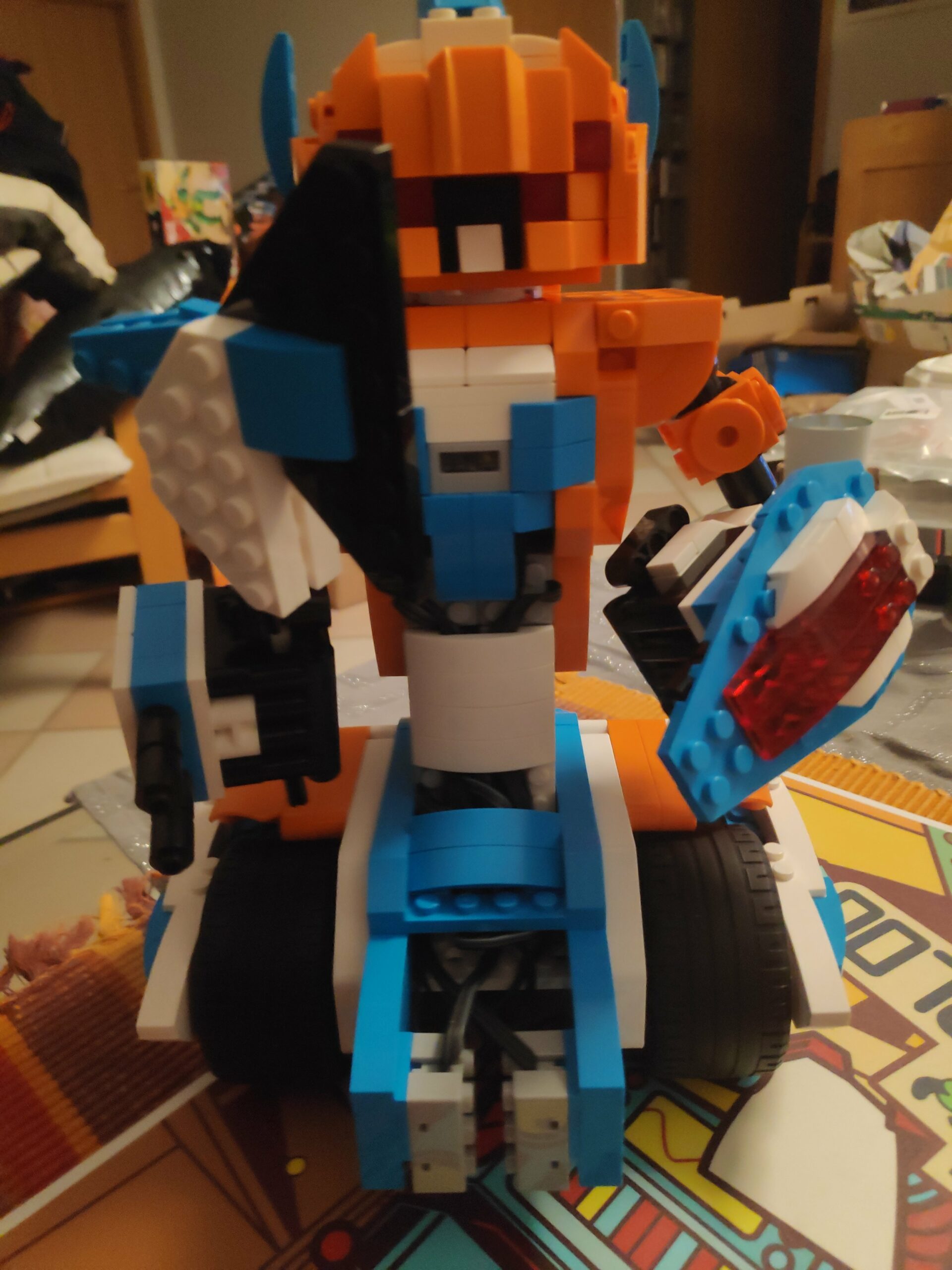

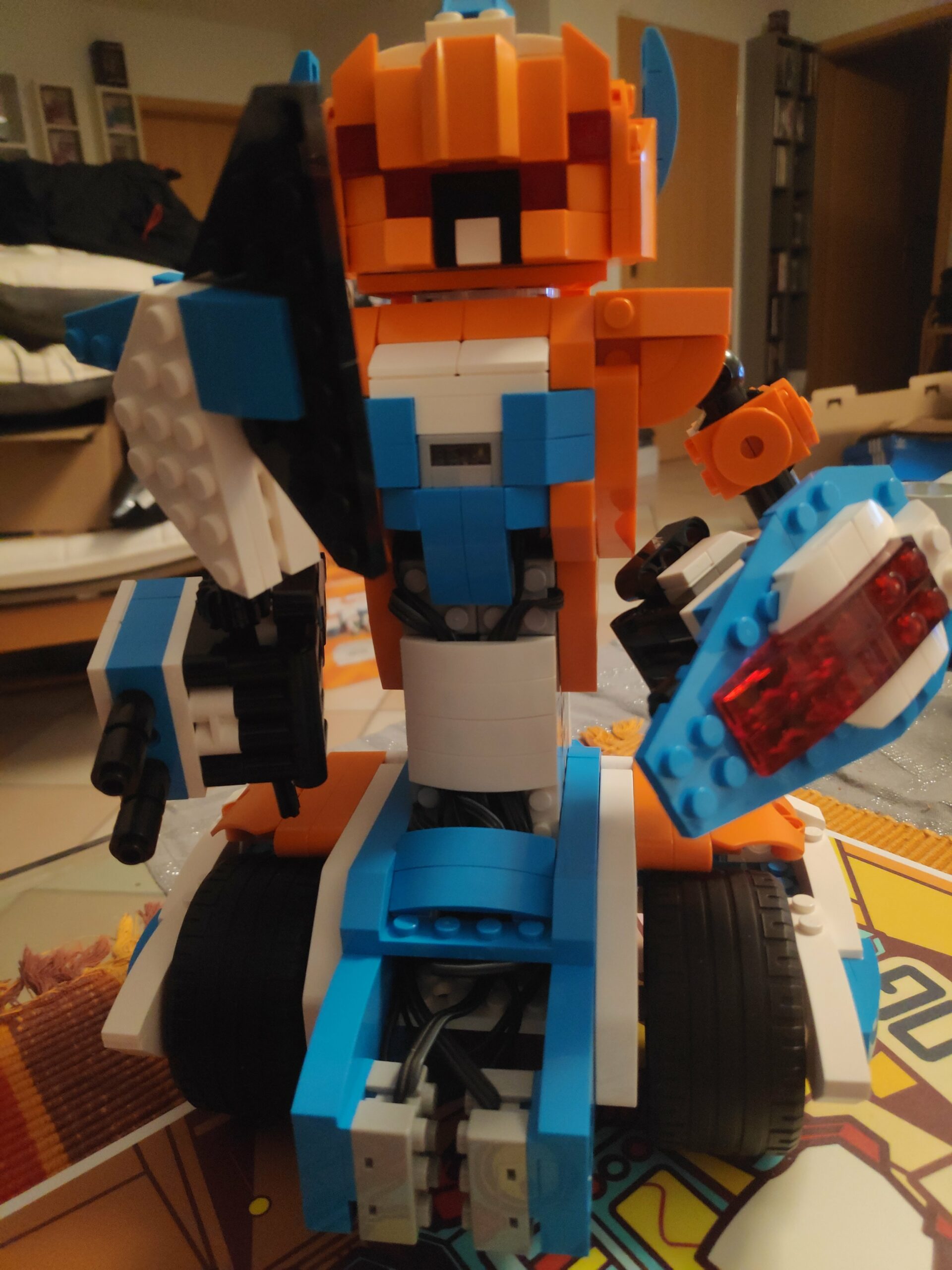
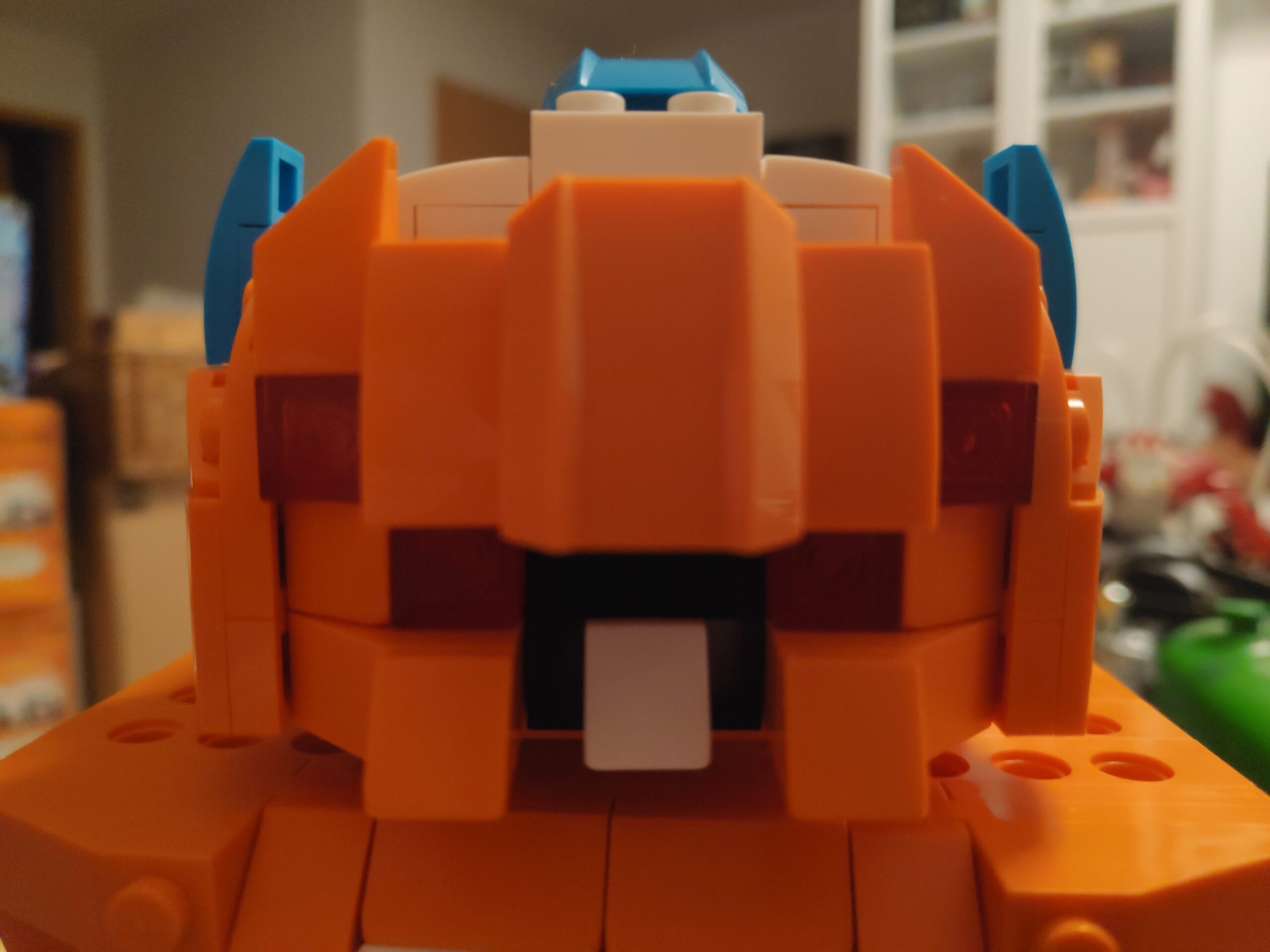
Hiwonder uHand Unboxing: uHand2.0: Hiwonder Bionic Robot Somatosensory Open-source Compatible with Arduino/ STM32 Programming. Find the latest News on robots drones AI robotic toys and gadgets at robots-blog.com. Follow us on our Blog Instagram Facebook Twitter or our other sites. Share your robotics ideas and products with us. #robots #robot #omgrobots #roboter #robotic #mycollection #collector #robotsblog #collection #botsofinstagram #bot #robotics #robotik #gadget #gadgets #toy #toys #drone #robotsofinstagram #instabots #photooftheday #picoftheday #followforfollow #instadaily #hiwonder #uhand #arduino #stm32
Guest post by IDS Corporate Communications
Autonomously driving robotic assistance system for the automated placement of coil creels
Due to the industry standard 4.0, digitalisation, automation and networking of systems and facilities are becoming the predominant topics in production and thus also in logistics. Industry 4.0 pursues the increasing optimisation of processes and workflows in favour of productivity and flexibility and thus the saving of time and costs. Robotic systems have become the driving force for automating processes. Through the Internet of Things (IoT), robots are becoming increasingly sensitive, autonomous, mobile and easier to operate. More and more they are becoming an everyday helper in factories and warehouses. Intelligent imaging techniques are playing an increasingly important role in this.
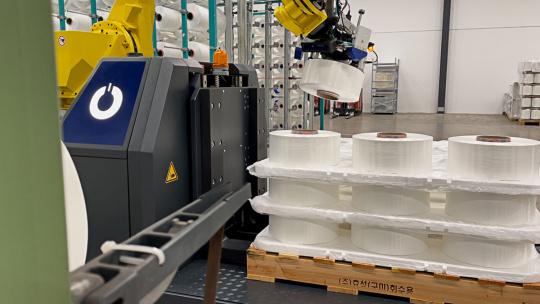
To meet the growing demands in scaling and changing production environments towards fully automated and intelligently networked production, the company ONTEC Automation GmbH from Naila in Bavaria has developed an autonomously driving robotic assistance system. The „Smart Robot Assistant“ uses the synergies of mobility and automation: it consists of a powerful and efficient intralogistics platform, a flexible robot arm and a robust 3D stereo camera system from the Ensenso N series by IDS Imaging Development Systems GmbH.
The solution is versatile and takes over monotonous, weighty set-up and placement tasks, for example. The autonomous transport system is suitable for floor-level lifting of Euro pallets up to container or industrial format as well as mesh pallets in various sizes with a maximum load of up to 1,200 kilograms. For a customer in the textile industry, the AGV (Automated Guided Vehicle) is used for the automated loading of coil creels. For this purpose, it picks up pallets with yarn spools, transports them to the designated creel and loads it for further processing. Using a specially developed gripper system, up to 1000 yarn packages per 8-hour shift are picked up and pushed onto a mandrel of the creel. The sizing scheme and the position of the coils are captured by an Ensenso 3D camera (N45 series) installed on the gripper arm.
Pallets loaded with industrial yarn spools are picked up from the floor of a predefined storage place and transported to the creel location. There, the gripper positions itself vertically above the pallet. An image trigger is sent to the Ensenso 3D camera from the N45 series, triggered by the in-house software ONTEC SPSComm. It networks with the vehicle’s PLC and can thus read out and pass on data. In the application, SPSComm controls the communication between the software parts of the vehicle, gripper and camera. This way, the camera knows when the vehicle and the grabber are in position to take a picture. This takes an image and passes on a point cloud to a software solution from ONTEC based on the standard HALCON software, which reports the coordinates of the coils on the pallet to the robot. The robot can then accurately pick up the coils and process them further. As soon as the gripper has cleared a layer of the yarn spools, the Ensenso camera takes a picture of the packaging material lying between the yarn spools and provides point clouds of this as well. These point clouds are processed similarly to provide the robot with the information with which a needle gripper removes the intermediate layers. „This approach means that the number of layers and finishing patterns of the pallets do not have to be defined in advance and even incomplete pallets can be processed without any problems,“ explains Tim Böckel, software developer at ONTEC. „The gripper does not have to be converted for the use of the needle gripper. For this application, it has a normal gripping component for the coils and a needle gripping component for the intermediate layers.“
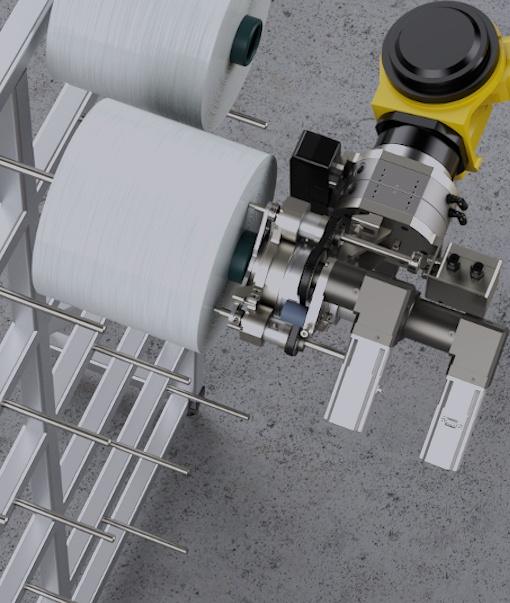
For this task, the mobile use for 3D acquisition of moving and static objects on the robot arm, the Ensenso 3D camera is suitable due to its compact design. The Ensenso N 45’s 3D stereo electronics are completely decoupled from the housing, allowing the use of a lightweight plastic composite as the housing material. The low weight facilitates the use on robot arms such as the Smart Robotic Asstistant. The camera can also cope with demanding environmental conditions. „Challenges with this application can be found primarily in the different lighting conditions that are evident in different rooms of the hall and at different times of the day,“ Tim Böckel describes the situation. Even in difficult lighting conditions, the integrated projector projects a high-contrast texture onto the object to be imaged by means of a pattern mask with a random dot pattern, thus supplementing the structures on featureless homogenous surfaces. This means that the integrated camera meets the requirements exactly. „By pre-configuring within NxView, the task was solved well.“ This sample programme with source code demonstrates the main functions of the NxLib library, which can be used to open one or more stereo and colour cameras whose image and depth data are visualised. Parameters such as exposure time, binning, AOI and depth measuring range can – as in this case – be adjusted live for the matching method used.
The matching process empowers the Ensenso 3D camera to recognise a very high number of pixels, including their position change, by means of the auxiliary structures projected onto the surface and to create complete, homogeneous depth information of the scene from this. This in turn ensures the necessary precision with which the Smart Robot Assistant proceeds. Other selection criteria for the camera were, among others, the standard vision interface Gigabit Ethernet and the global shutter 1.3 MP sensor. „The camera only takes one image pair of the entire pallet in favour of a faster throughput time, but it has to provide the coordinates from a relatively large distance with an accuracy in the millimetre range to enable the robot arm to grip precisely,“ explains Matthias Hofmann, IT specialist for application development at ONTEC. „We therefore need the high resolution of the camera to be able to safely record the edges of the coils with the 3D camera.“ The localisation of the edges is important in order to be able to pass on as accurate as possible the position from the centre of the spool to the gripper.
Furthermore, the camera is specially designed for use in harsh environmental conditions. It has a screwable GPIO connector for trigger and flash and is IP65/67 protected against dirt, dust, splash water or cleaning agents.
The Ensenso SDK enables hand-eye calibration of the camera to the robot arm, allowing easy translation or displacement of coordinates using the robot pose. In addition, by using the internal camera settings, a „FileCam“ of the current situation is recorded at each pass, i.e. at each image trigger. This makes it possible to easily adjust any edge cases later on, in this application for example unexpected lighting conditions, obstacles in the image or also an unexpected positioning of the coils in the image. The Ensenso SDK also allows the internal camera LOG files to be stored and archived for possible evaluation.
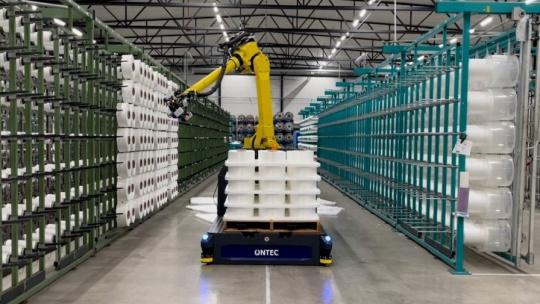
ONTEC also uses these „FileCams“ to automatically check test cases and thus ensure the correct functioning of all arrangements when making adjustments to the vision software. In addition, various vehicles can be coordinated and logistical bottlenecks minimised on the basis of the control system specially developed by ONTEC. Different assistants can be navigated and act simultaneously in a very confined space. By using the industrial interface tool ONTEC SPSComm, even standard industrial robots can be safely integrated into the overall application and data can be exchanged between the different systems.
Further development of the system is planned, among other things, in terms of navigation of the autonomous vehicle. „With regard to vehicle navigation for our AGV, the use of IDS cameras is very interesting. We are currently evaluating the use of the new Ensenso S series to enable the vehicle to react even more flexibly to obstacles, for example, classify them and possibly even drive around them,“ says Tim Böckel, software developer at ONTEC, outlining the next development step.
ONTEC’s own interface configuration already enables the system to be integrated into a wide variety of Industry 4.0 applications, while the modular structure of the autonomously moving robot solution leaves room for adaptation to a wide variety of tasks. In this way, it not only serves to increase efficiency and flexibility in production and logistics, but in many places also literally contributes to relieving the workload of employees.
More at: https://en.ids-imaging.com/casestudies-detail/picked-up-and-put-off-ensenso.html
So einfach kann es sein, einen eigenen Roboter zu konstruieren! Die kleinen Roboter aus
der neuen Reihe ReBotz sind mit wenigen Handgriffen zusammengebaut. Mit Batterien
versorgt, bringen sie Kinder ab acht Jahren mit Ihren kuriosen Fortbewegungsarten zum
Staunen und mit ihren besonderen Charakteren zum Schmunzeln. Besonders Spaß macht
es, die Körperteile der verschiedenen ReBotz durcheinander zu mischen und so ganz neue
Fortbewegungsmethoden zu erfinden. Auf diese Weise wird die Sammelleidenschaft und
die Lust der jungen Forscherinnen und Forscher am Experimentieren geweckt.
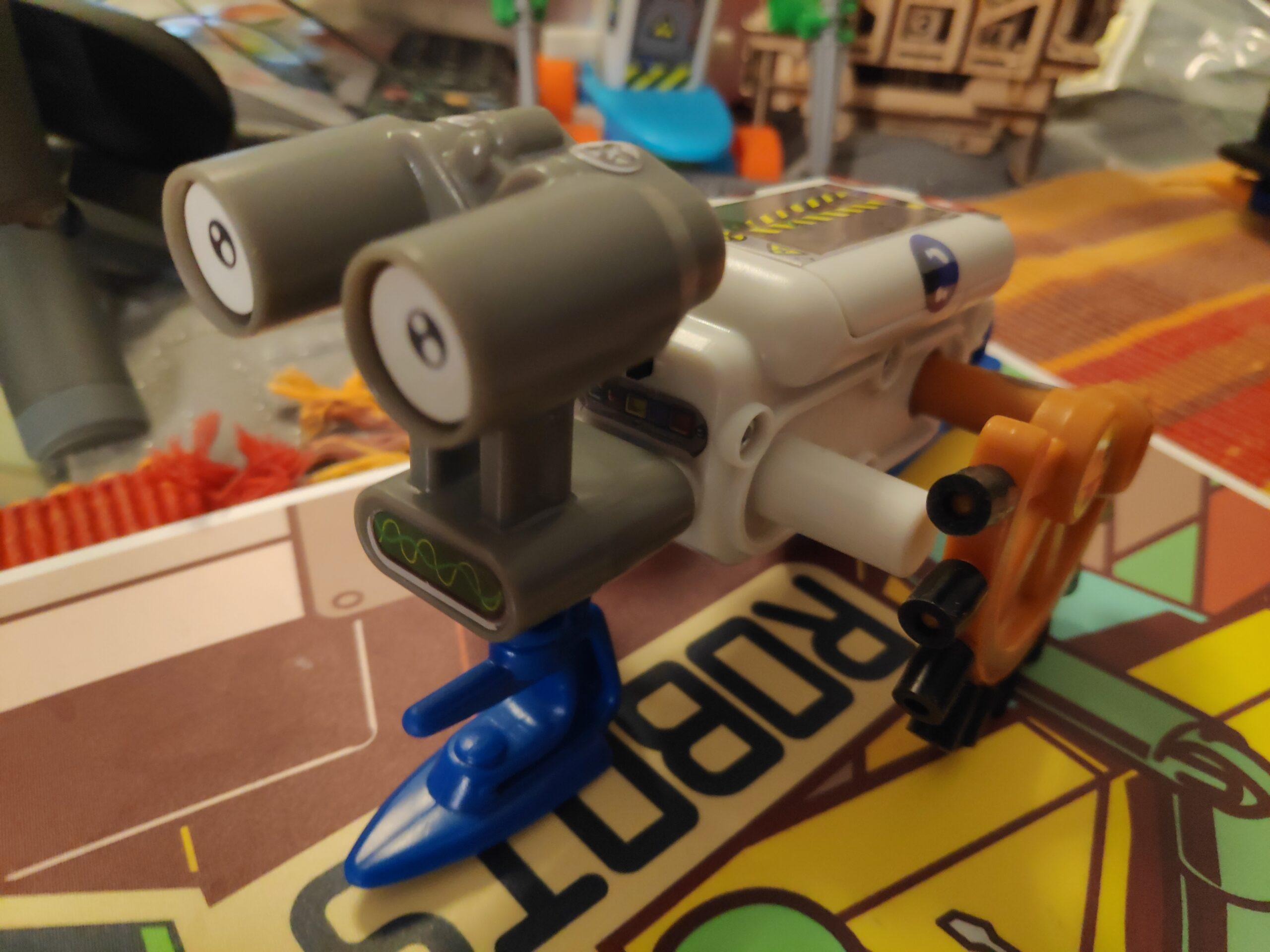
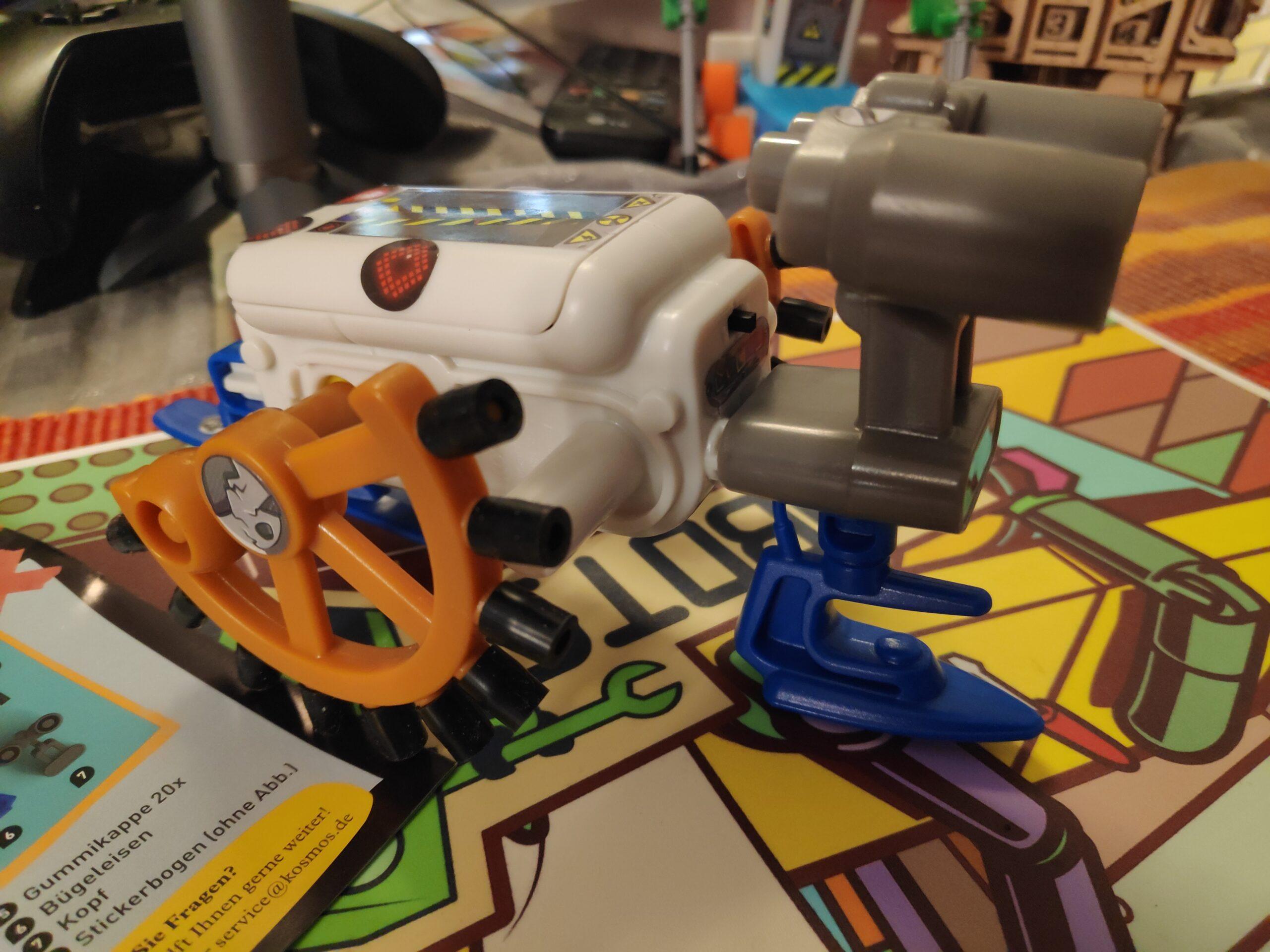
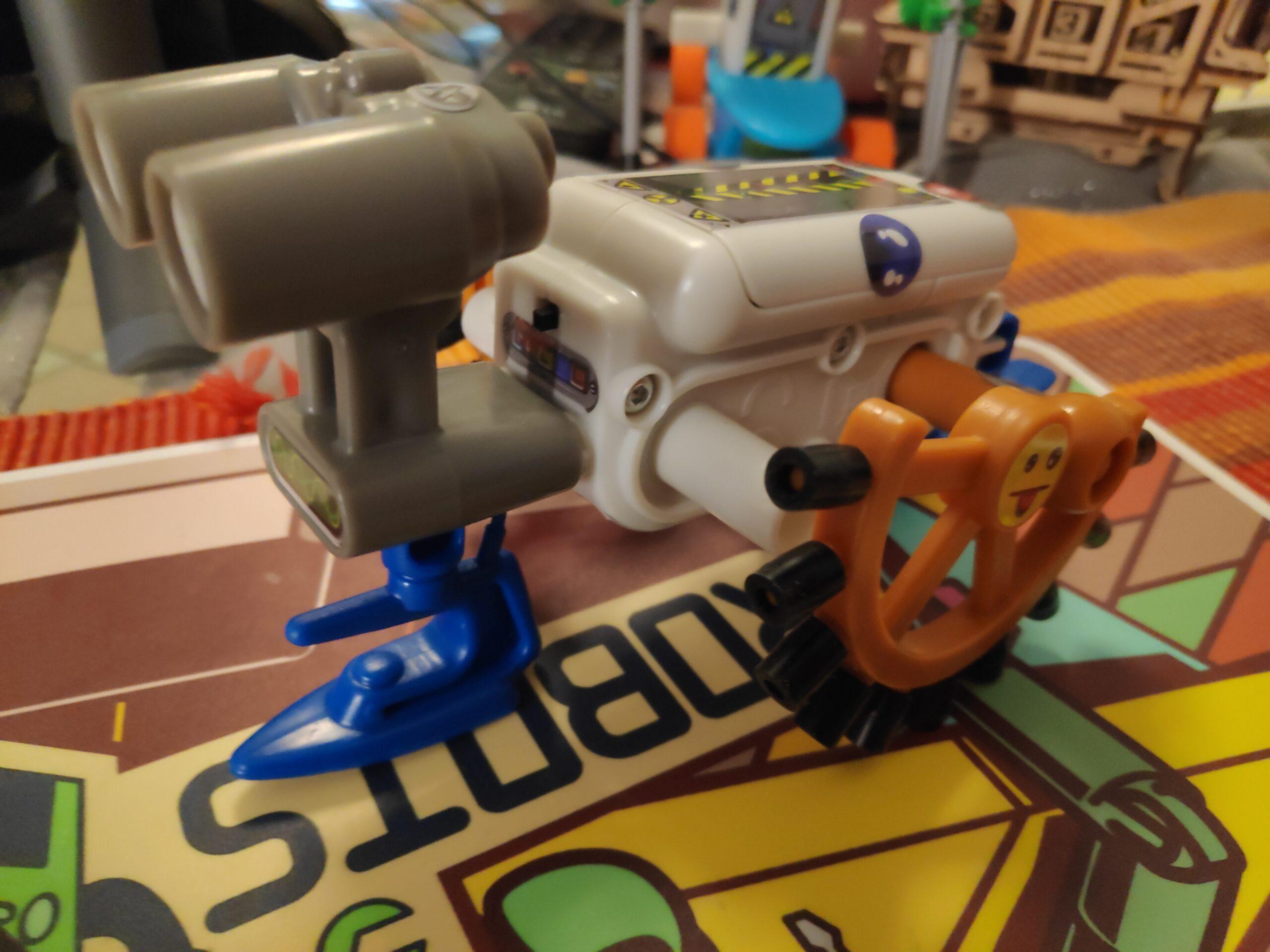
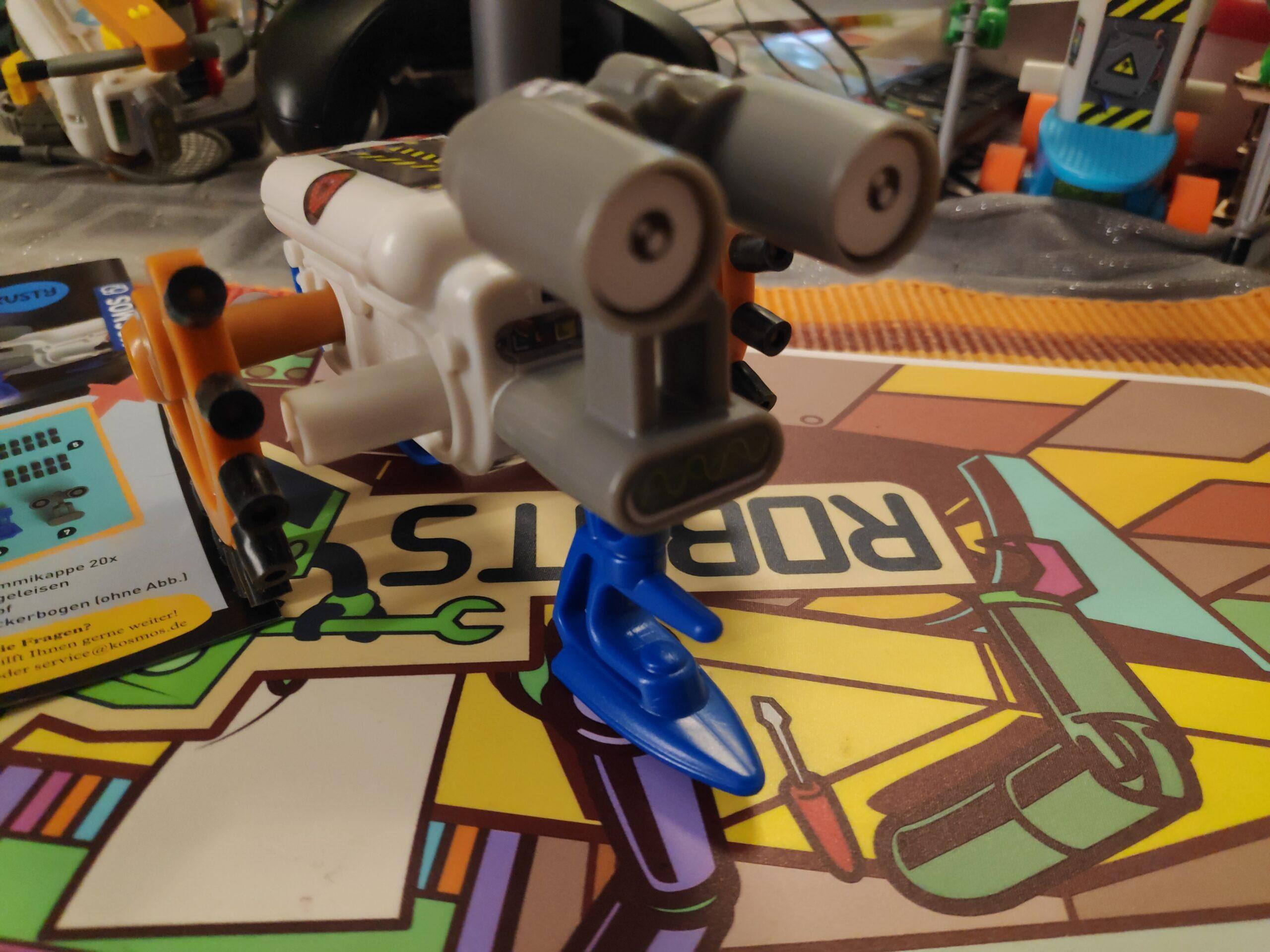
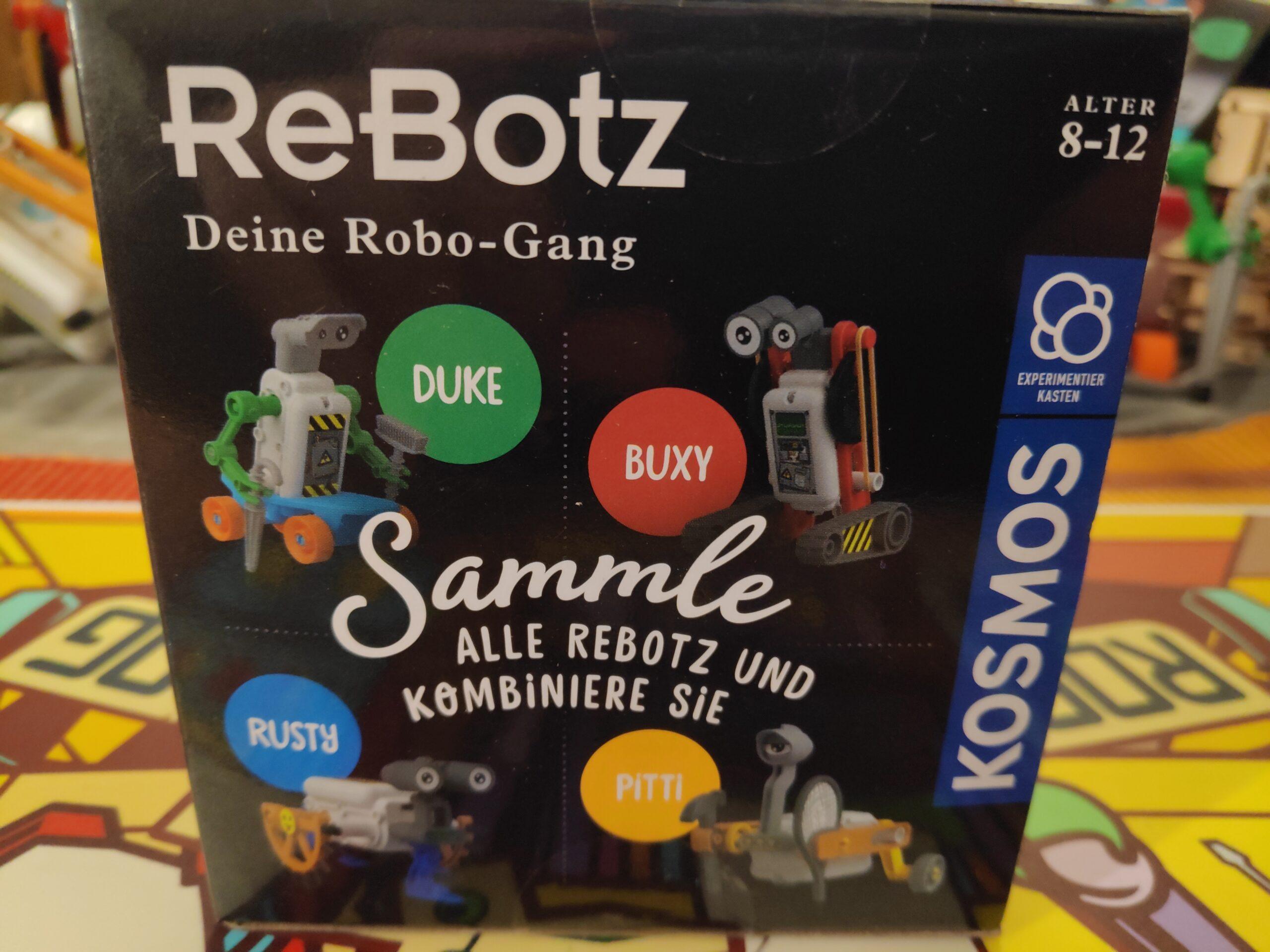
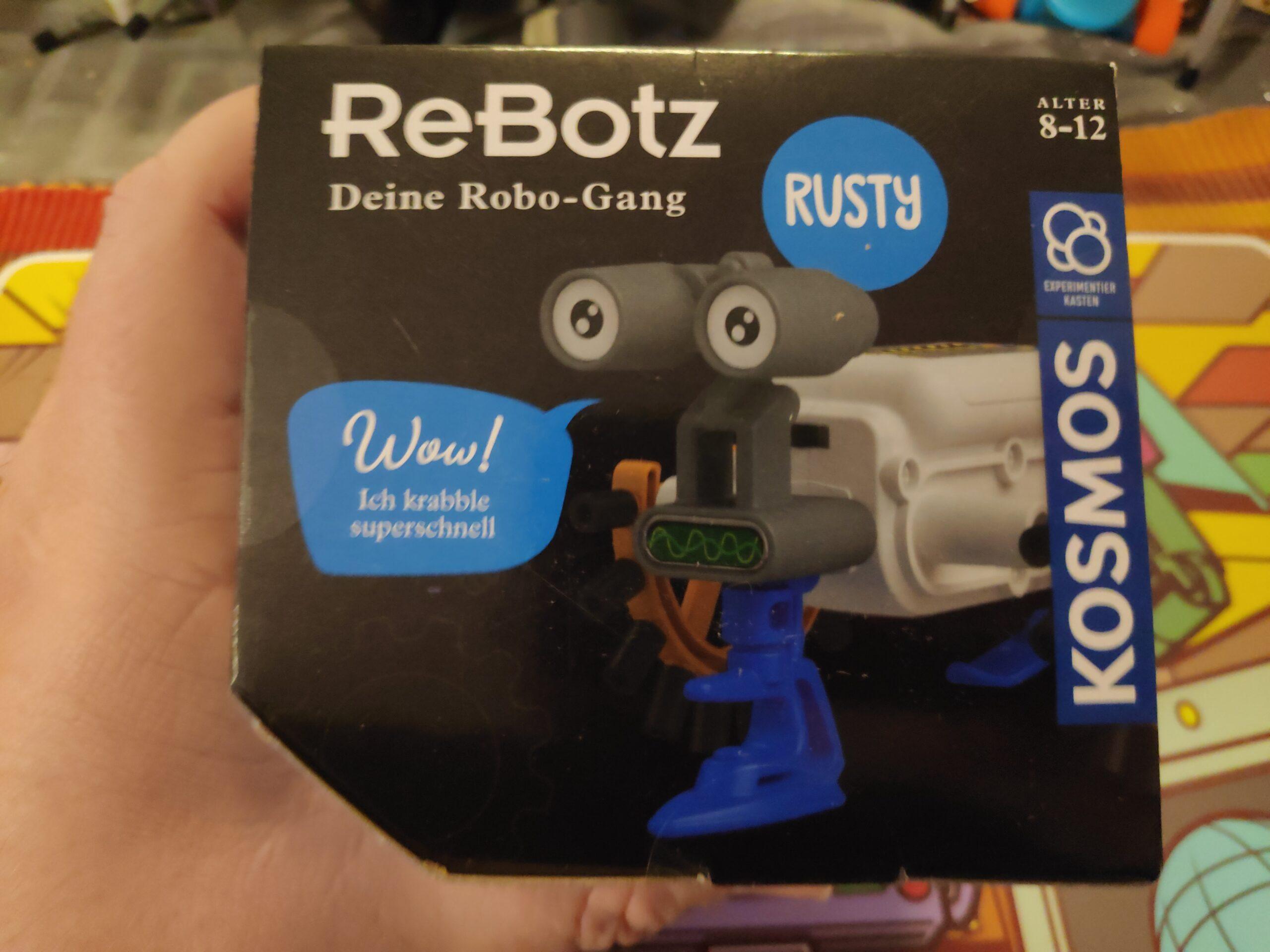
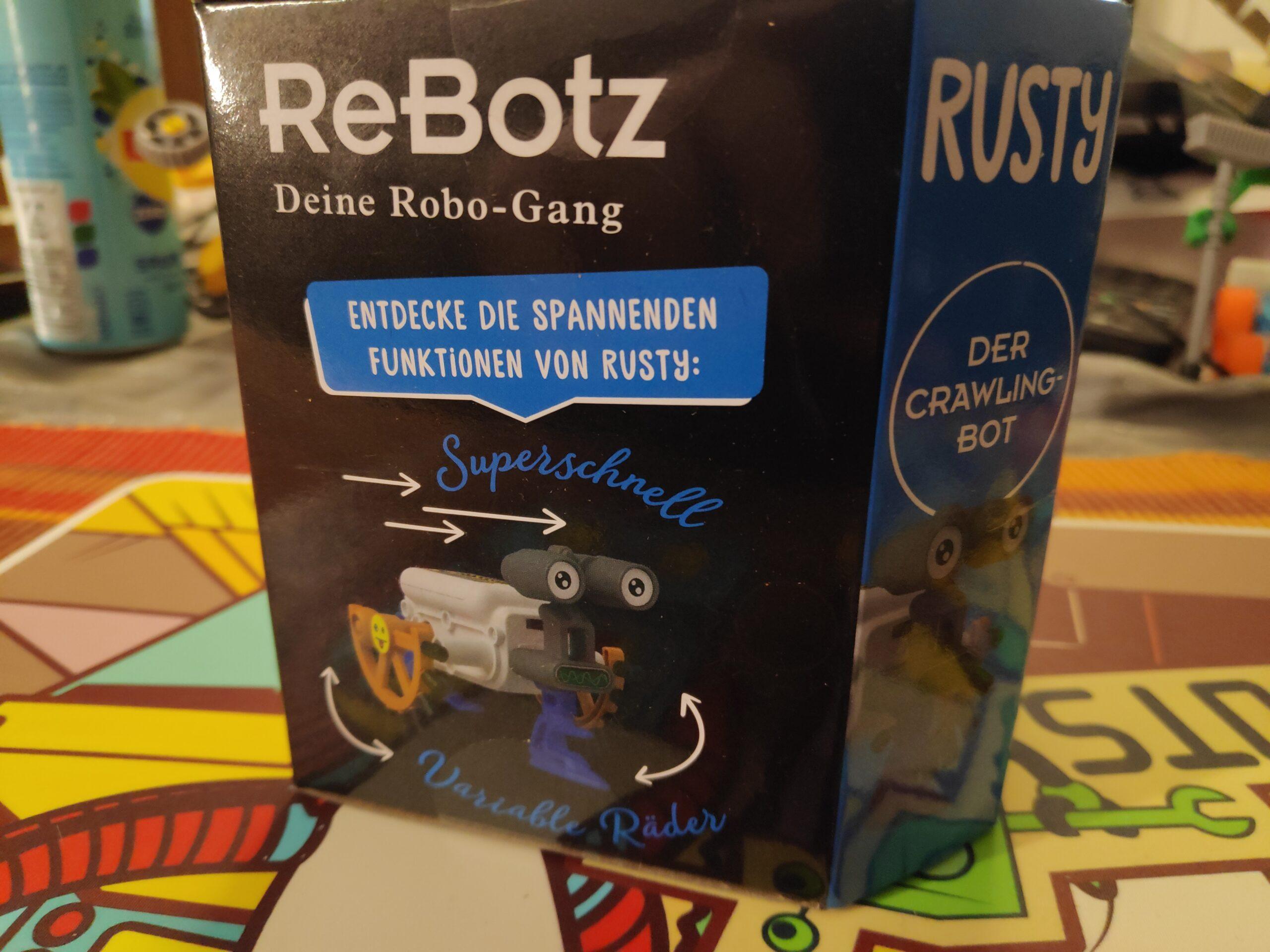
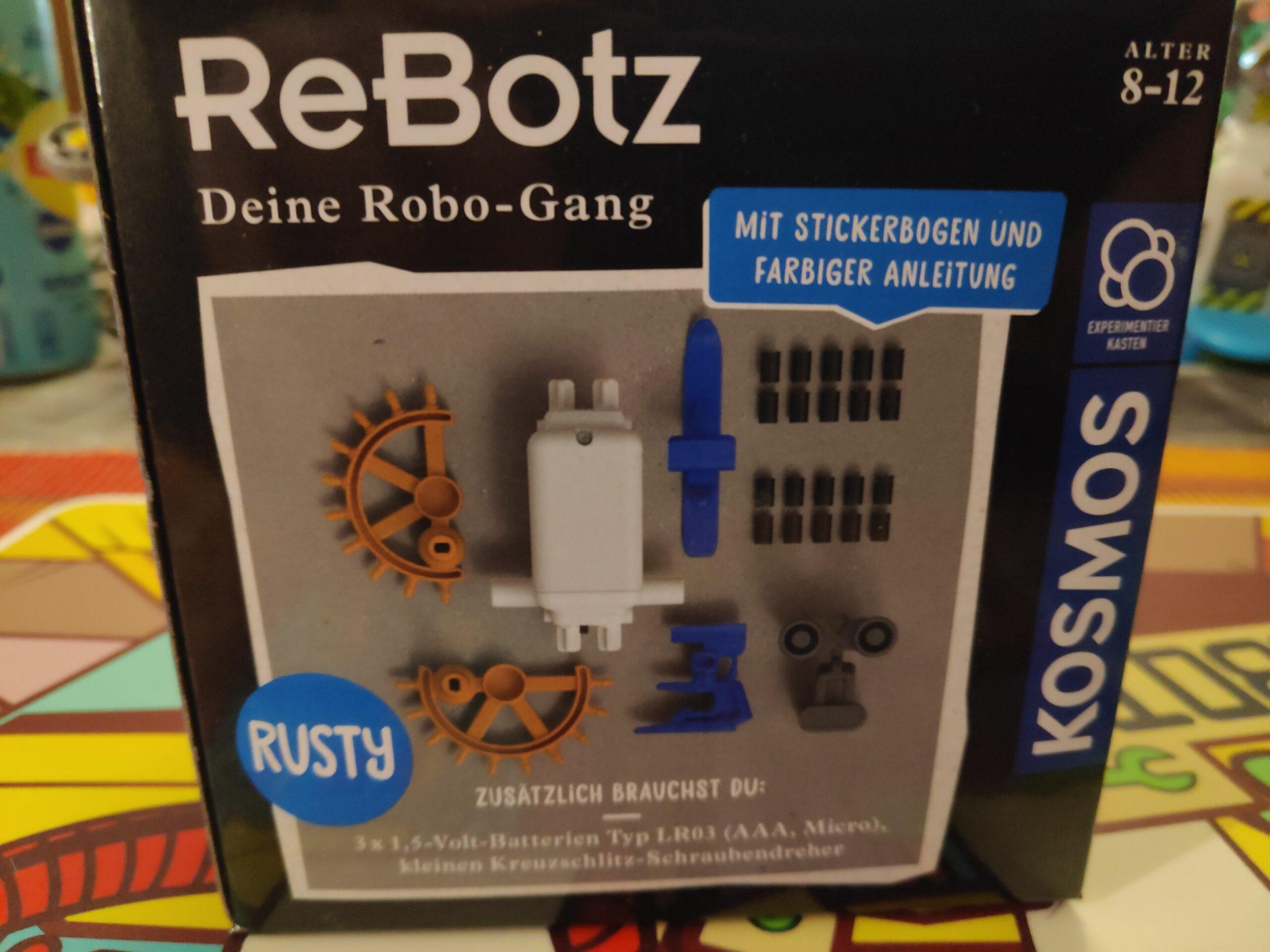
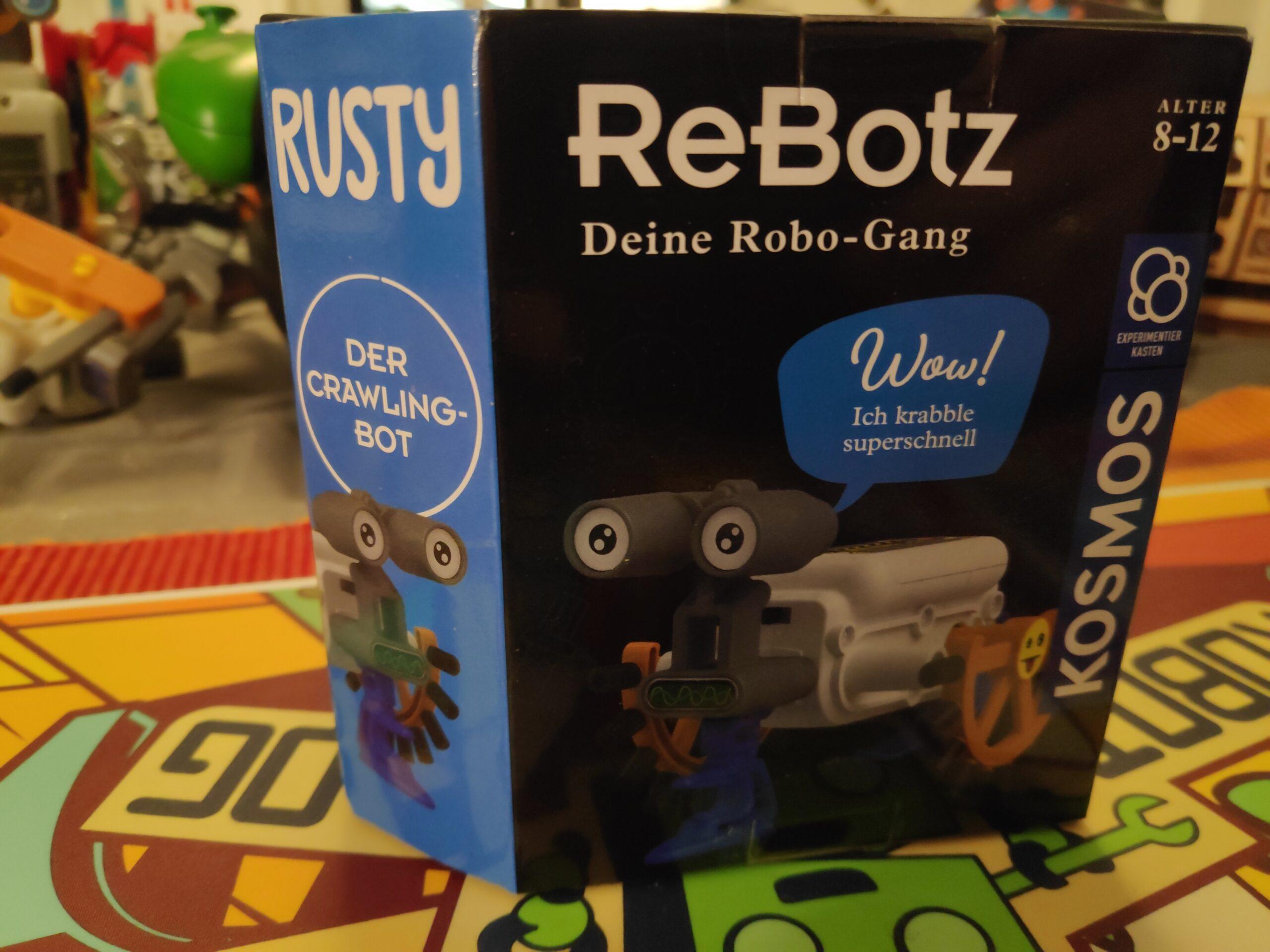



So einfach kann es sein, einen eigenen Roboter zu konstruieren! Die kleinen Roboter aus
der neuen Reihe ReBotz sind mit wenigen Handgriffen zusammengebaut. Mit Batterien
versorgt, bringen sie Kinder ab acht Jahren mit Ihren kuriosen Fortbewegungsarten zum
Staunen und mit ihren besonderen Charakteren zum Schmunzeln. Besonders Spaß macht
es, die Körperteile der verschiedenen ReBotz durcheinander zu mischen und so ganz neue
Fortbewegungsmethoden zu erfinden. Auf diese Weise wird die Sammelleidenschaft und
die Lust der jungen Forscherinnen und Forscher am Experimentieren geweckt.
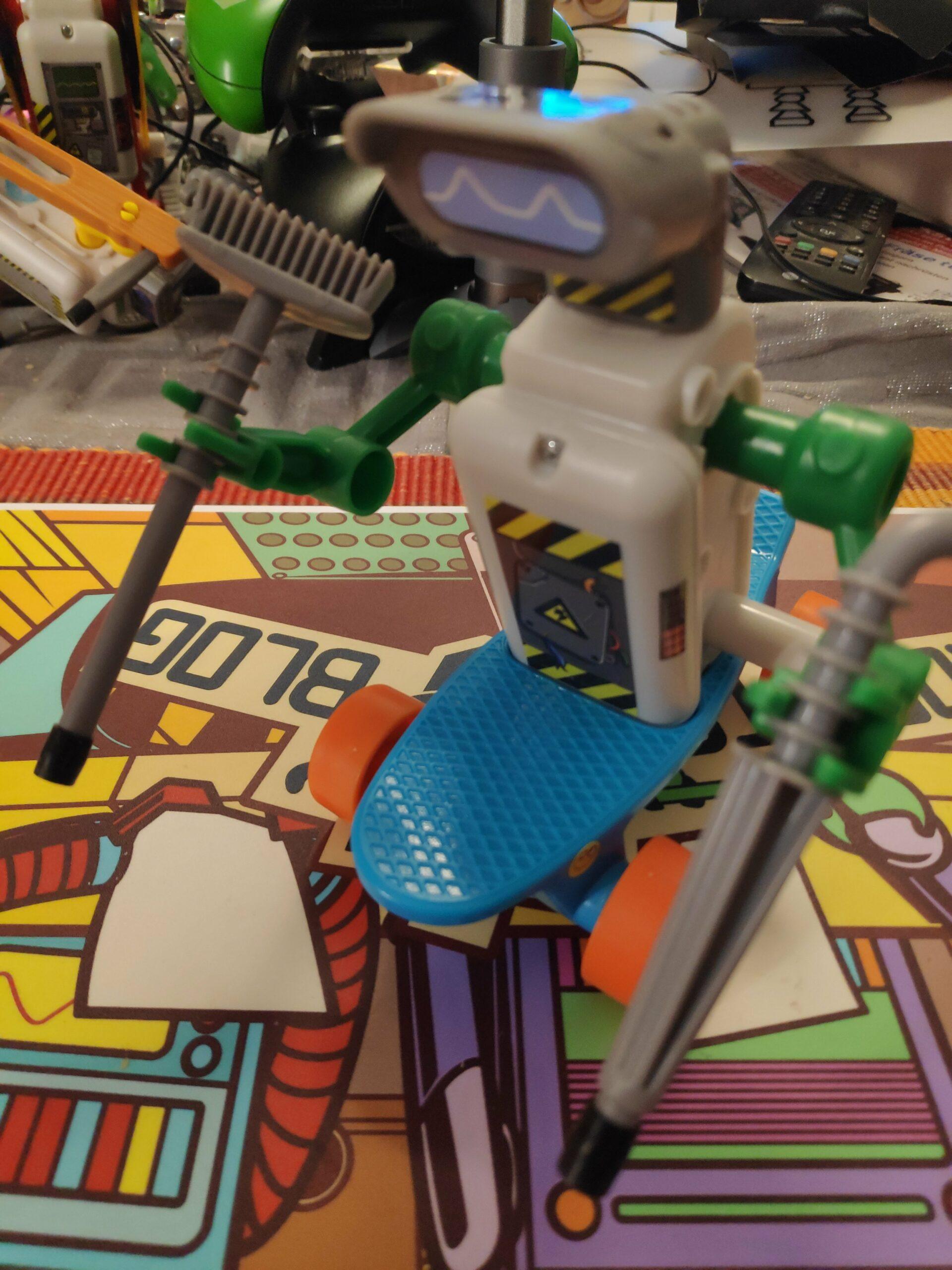
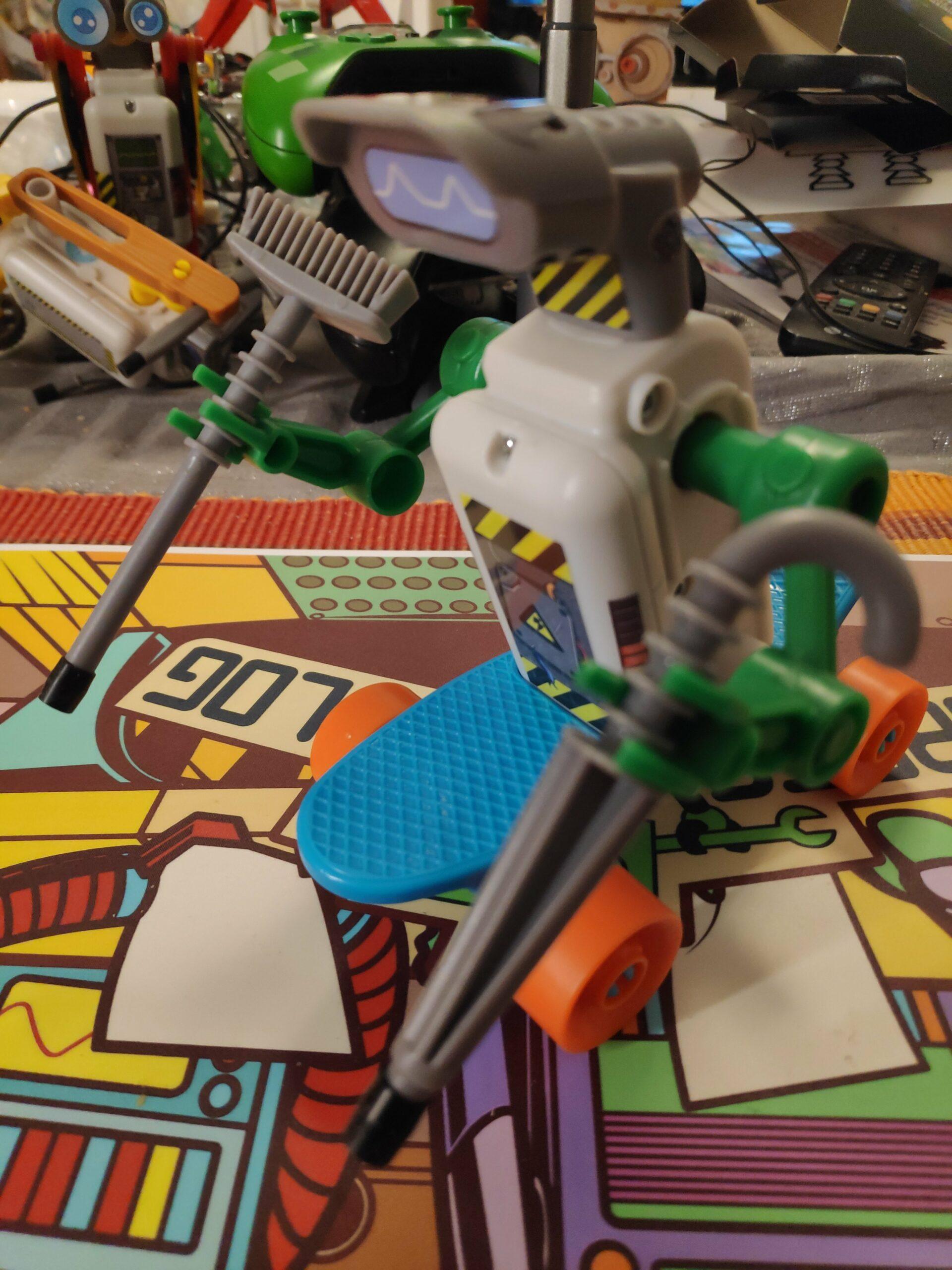
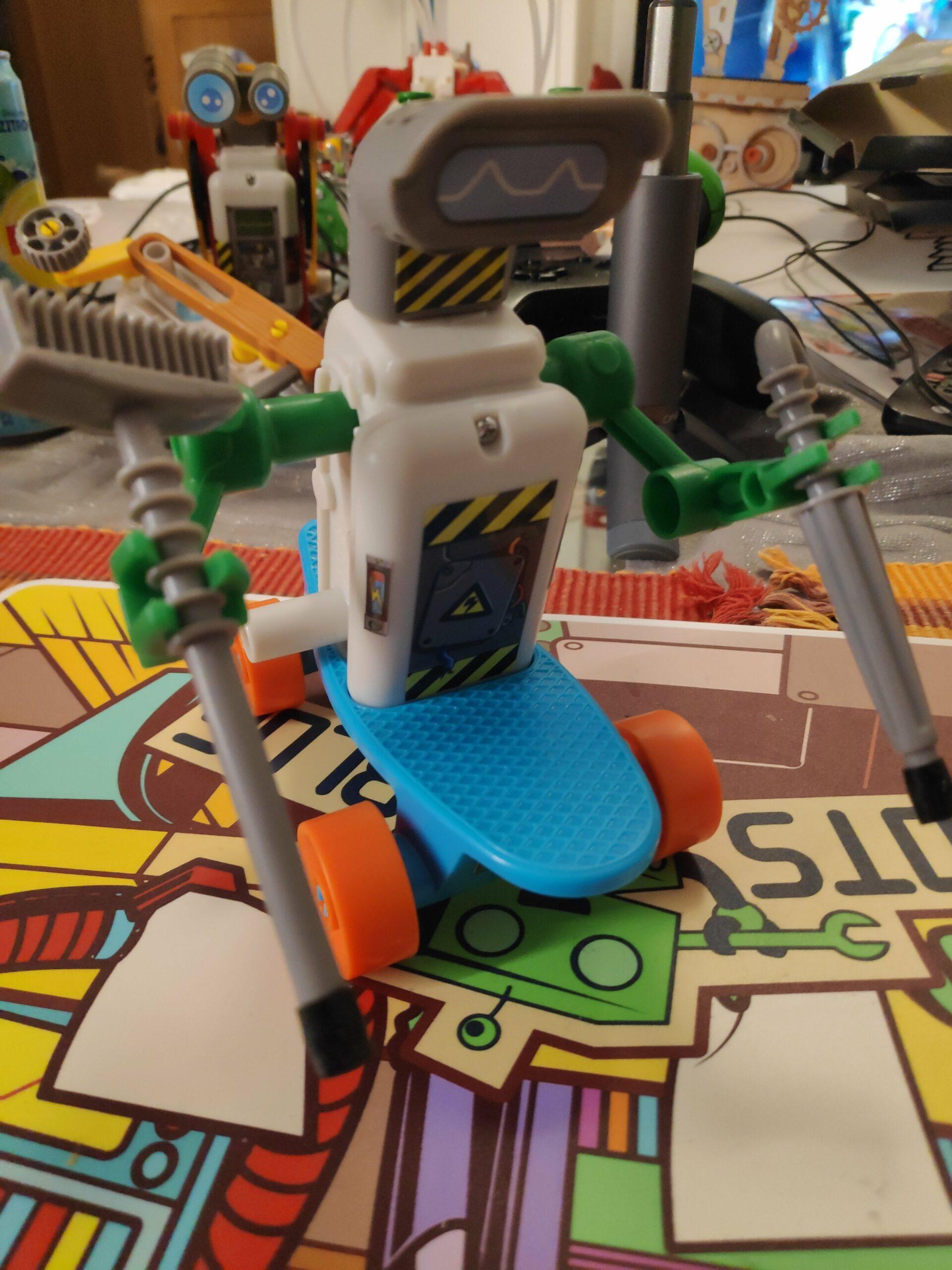
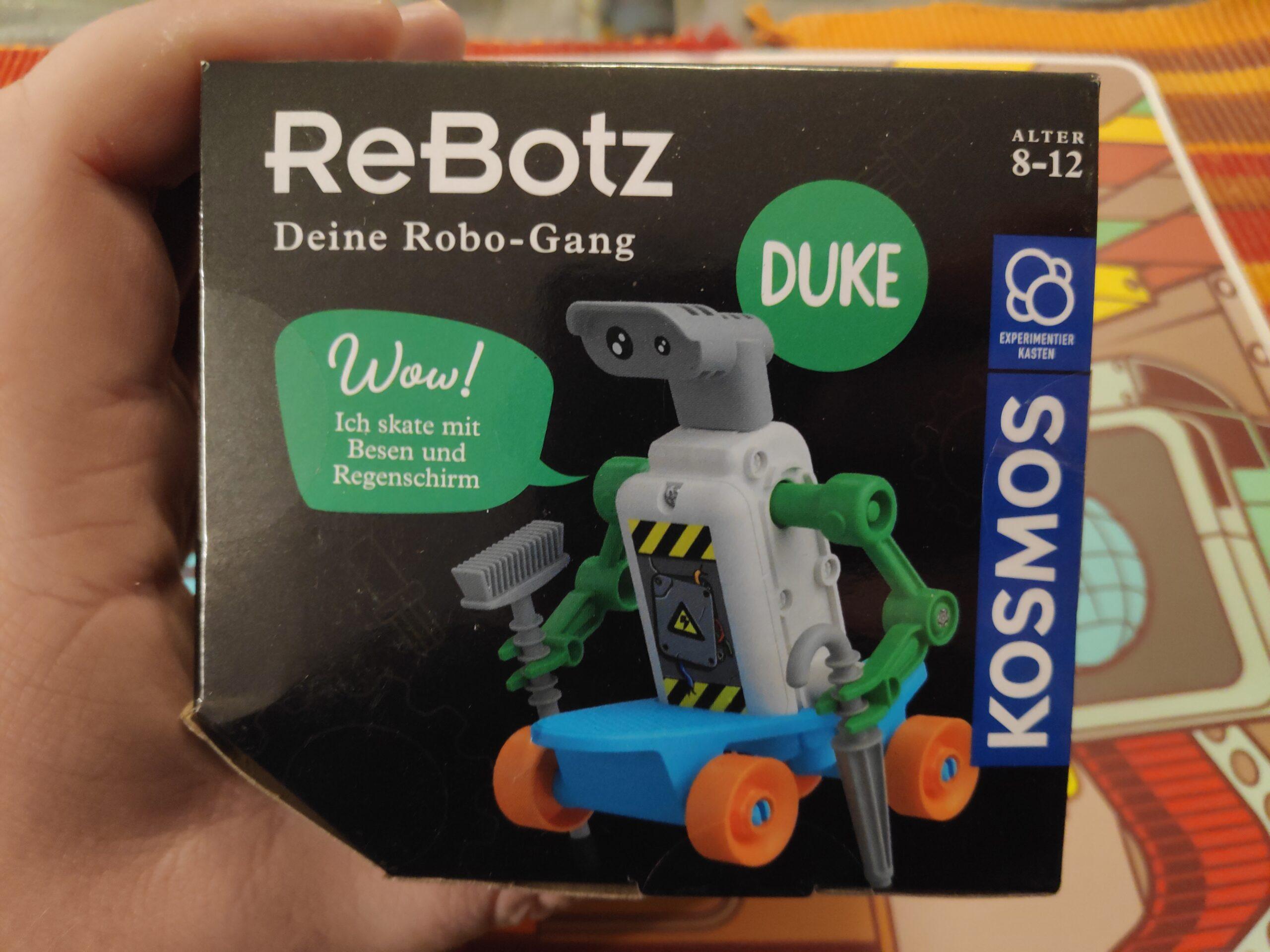
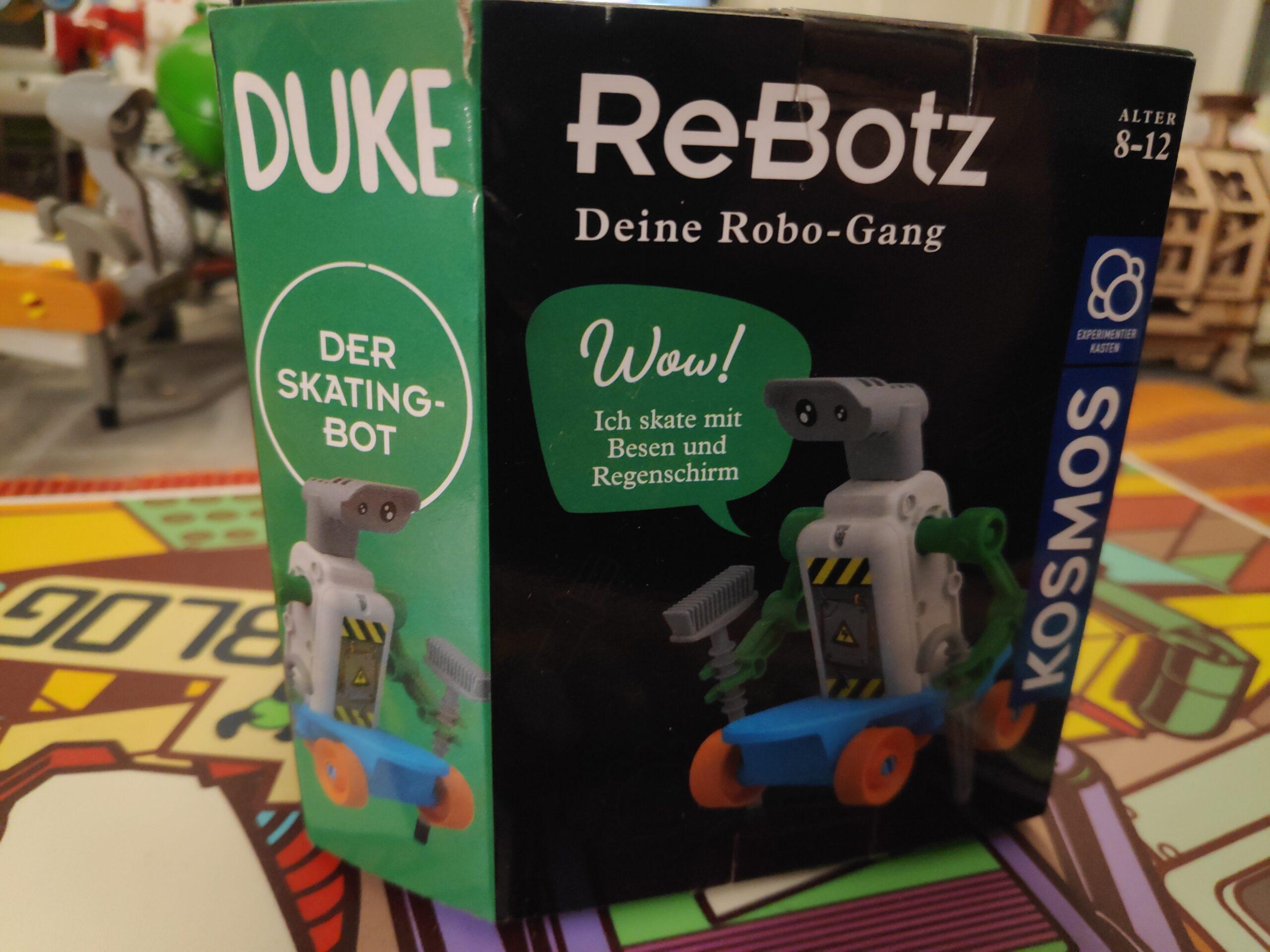
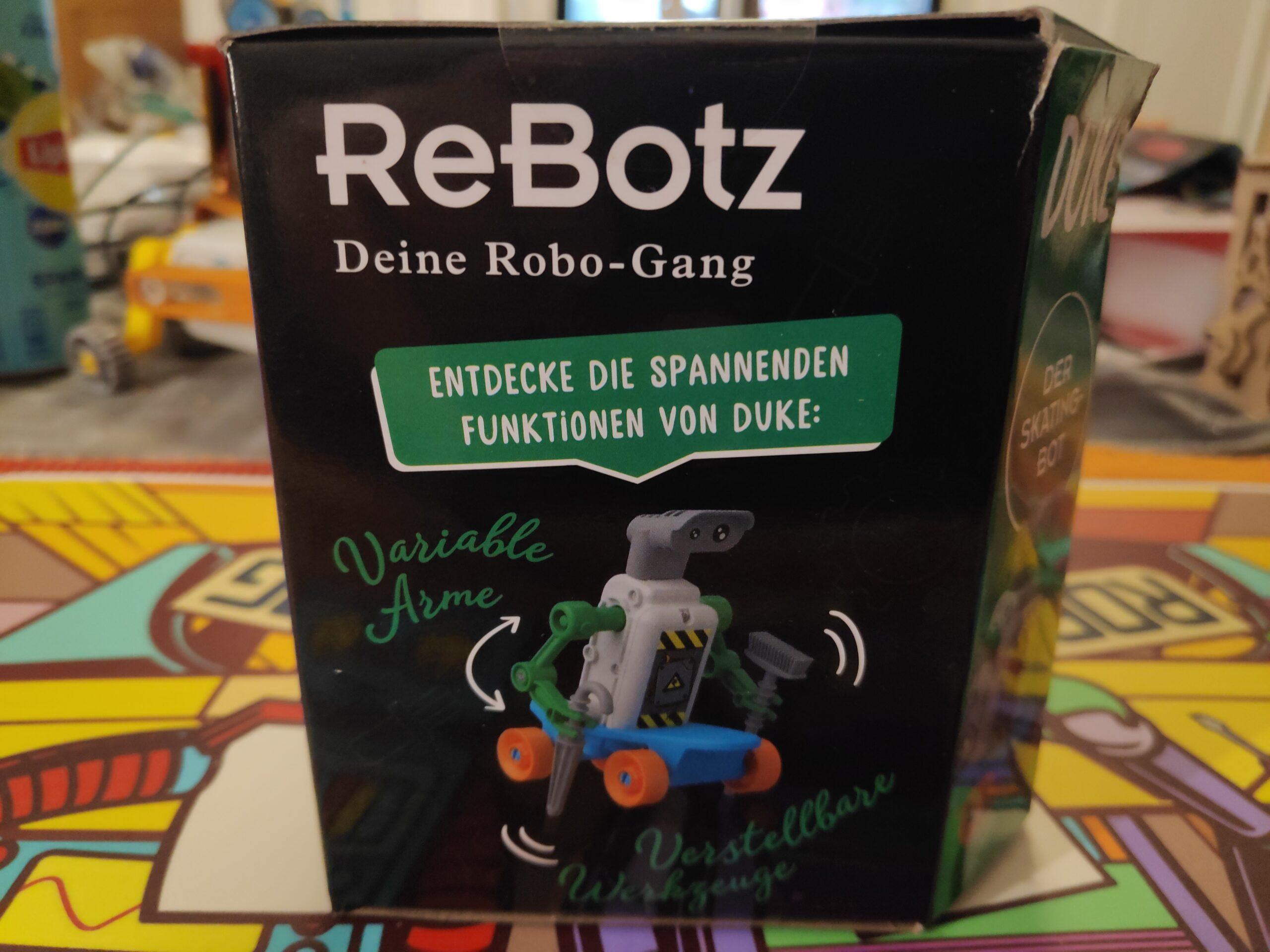
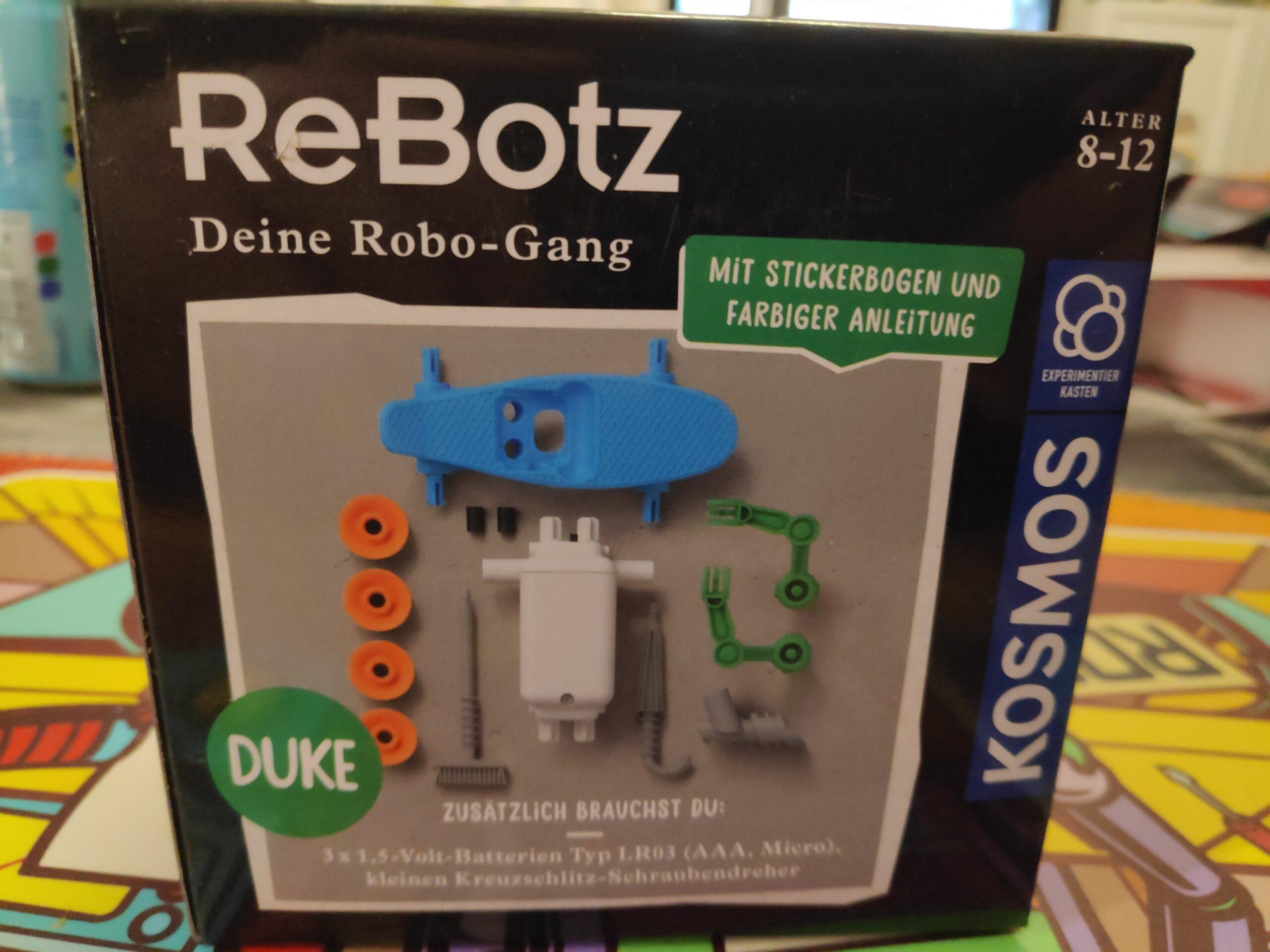
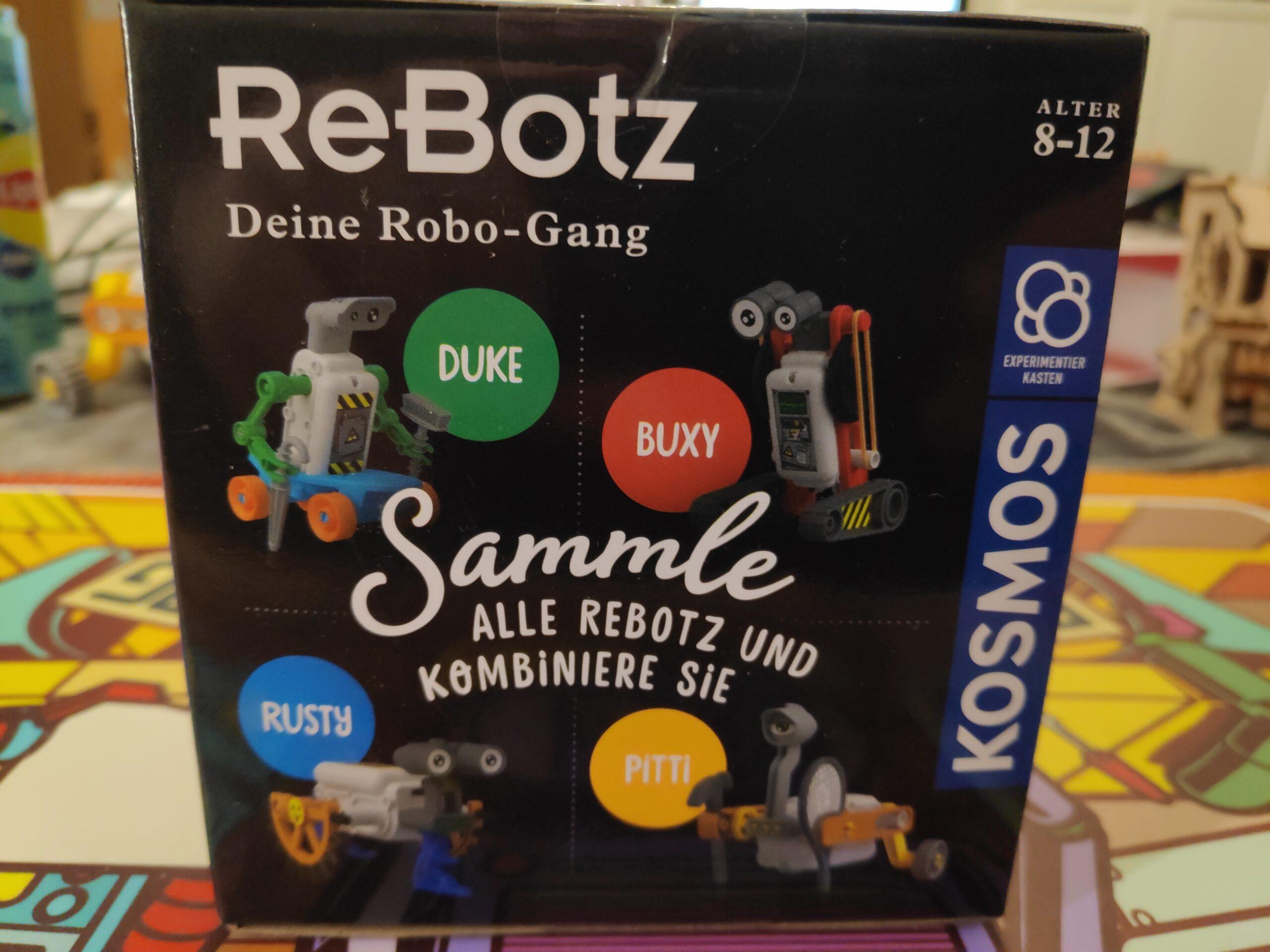
Kosmos ReBotz – Pitti der Walking-Bot.
So einfach kann es sein, einen eigenen Roboter zu konstruieren! Die kleinen Roboter aus
der neuen Reihe ReBotz sind mit wenigen Handgriffen zusammengebaut. Mit Batterien
versorgt, bringen sie Kinder ab acht Jahren mit Ihren kuriosen Fortbewegungsarten zum
Staunen und mit ihren besonderen Charakteren zum Schmunzeln. Besonders Spaß macht
es, die Körperteile der verschiedenen ReBotz durcheinander zu mischen und so ganz neue
Fortbewegungsmethoden zu erfinden. Auf diese Weise wird die Sammelleidenschaft und
die Lust der jungen Forscherinnen und Forscher am Experimentieren geweckt.
Find the latest News on robots drones AI robotic toys and gadgets at robots-blog.com. Follow us on our Blog Instagram Facebook Twitter or our other sites. Share your robotics ideas and products with us. #robots #robot #omgrobots #roboter #robotic #mycollection #collector #robotsblog #collection #botsofinstagram #bot #robotics #robotik #gadget #gadgets #toy #toys #drone #robotsofinstagram #instabots #photooftheday #picoftheday #followforfollow #instadaily #kosmos #rebotz #buxy #pitti #rusty #duke
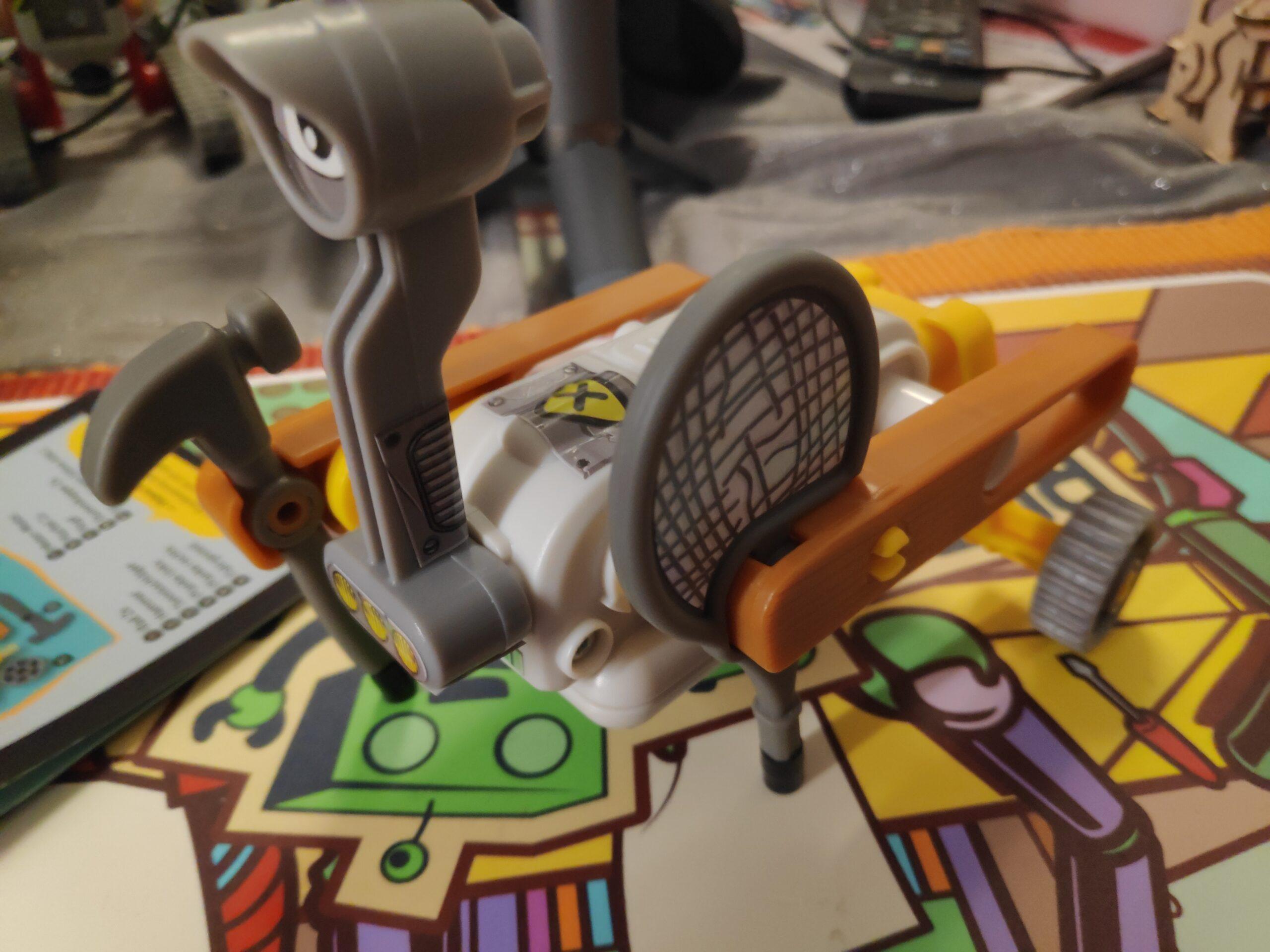
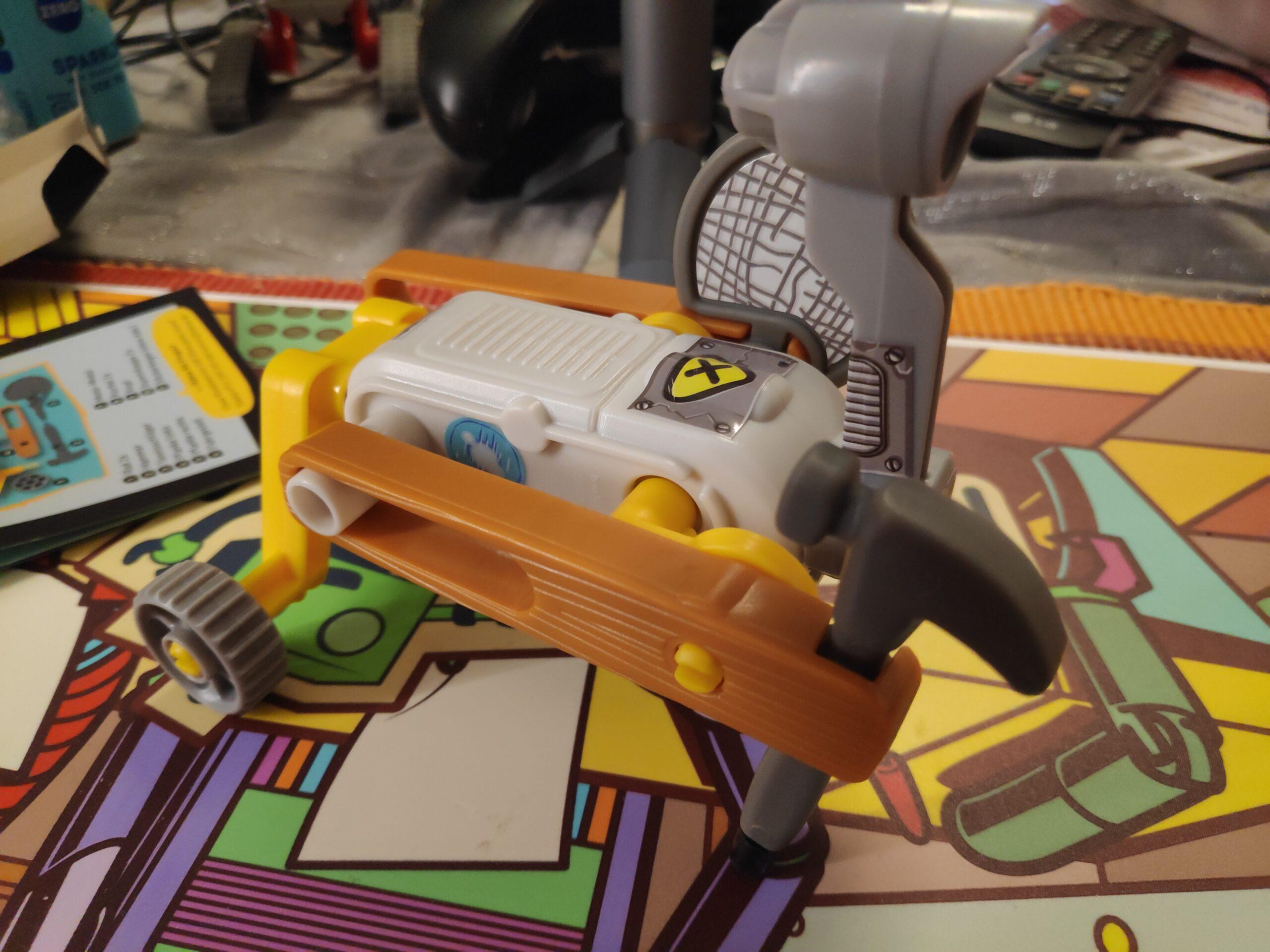
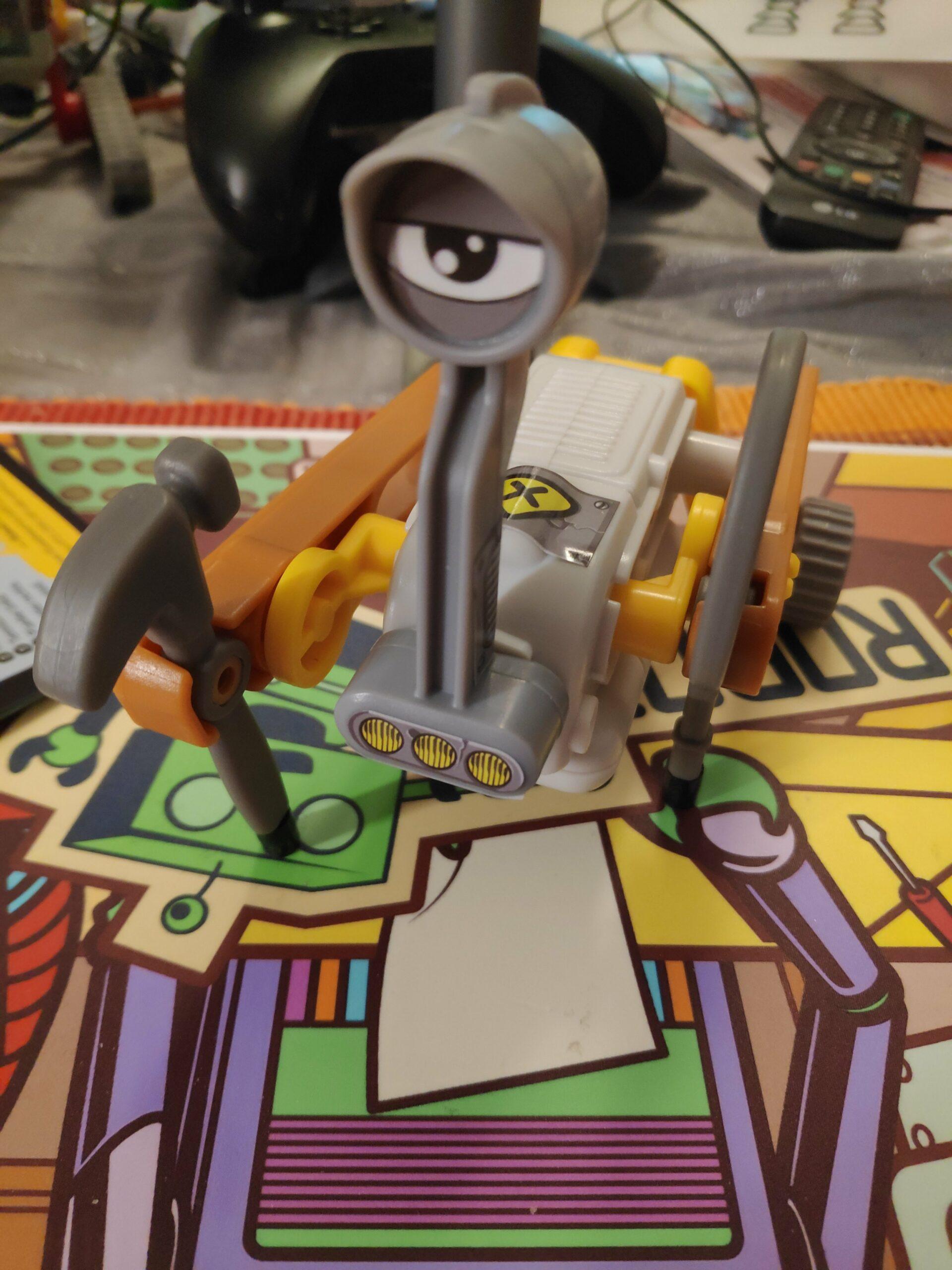
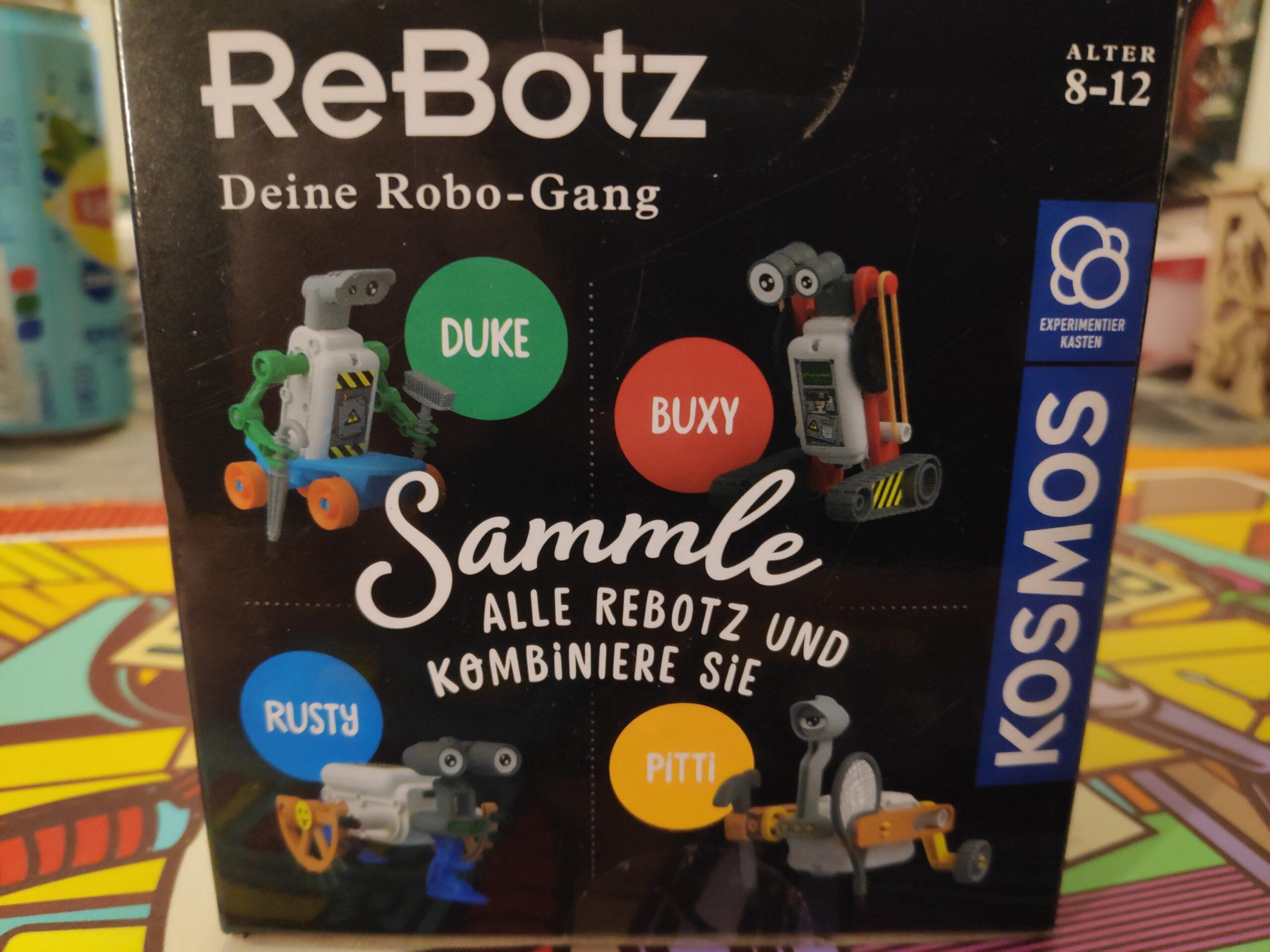

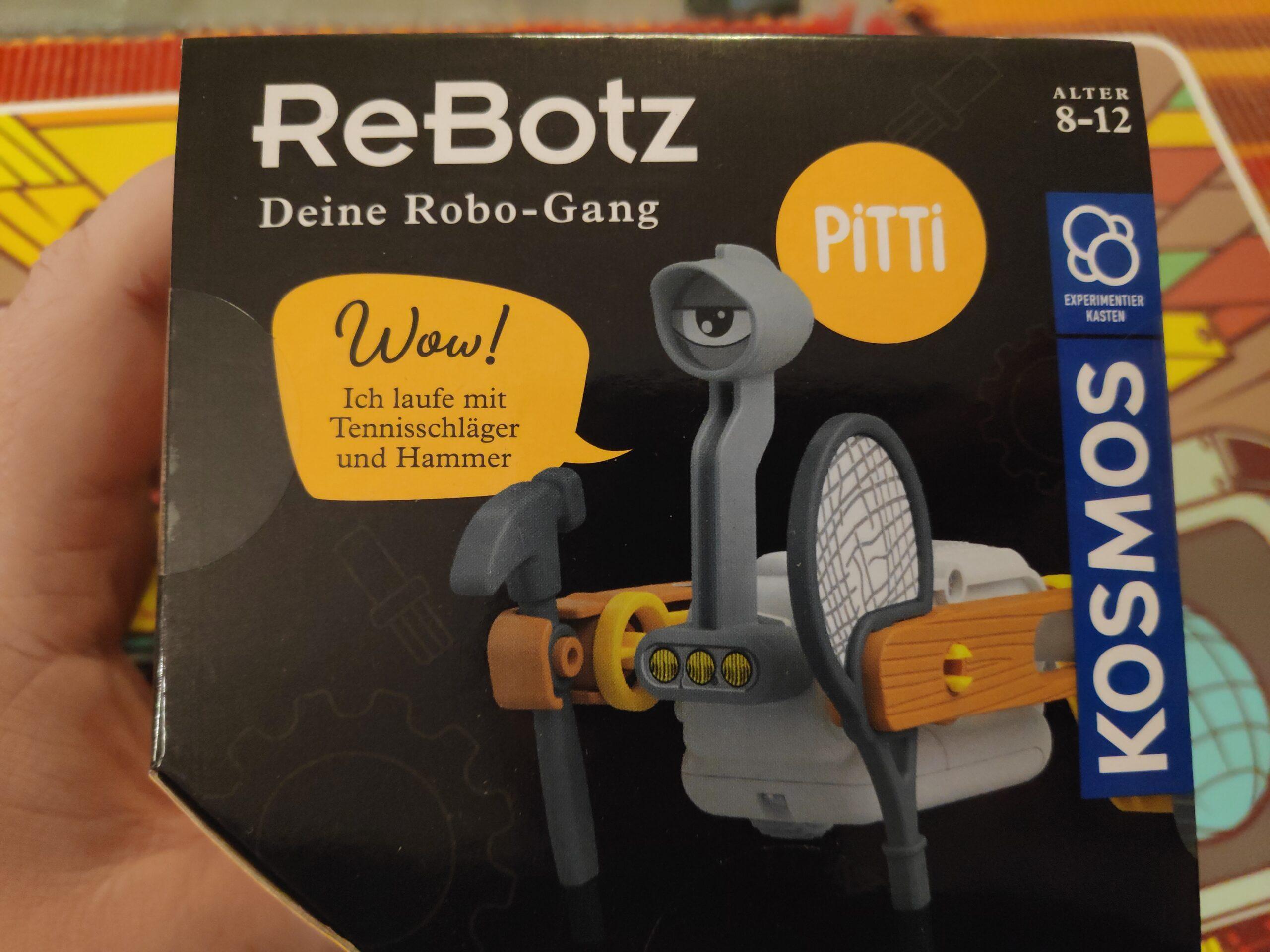
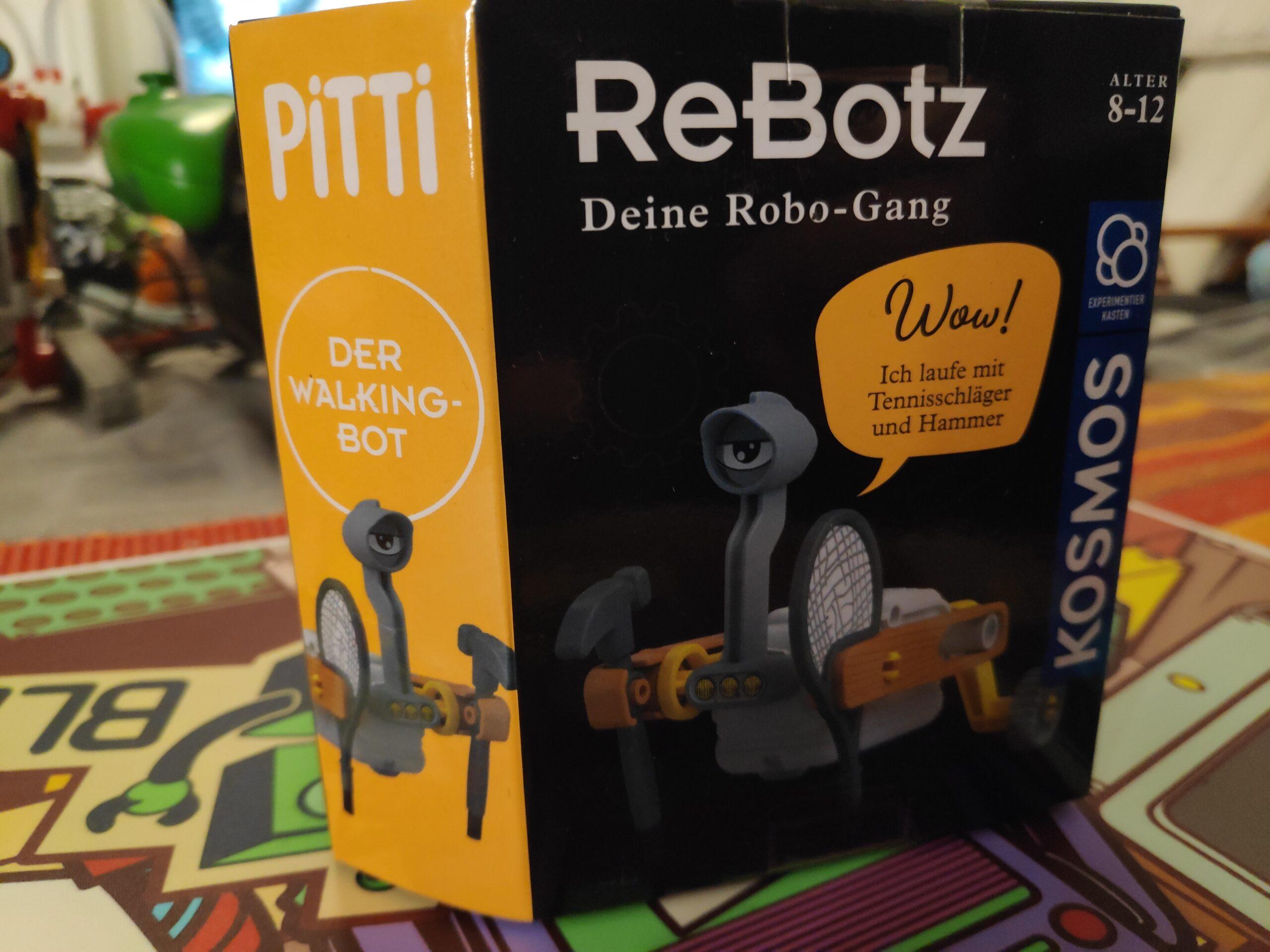
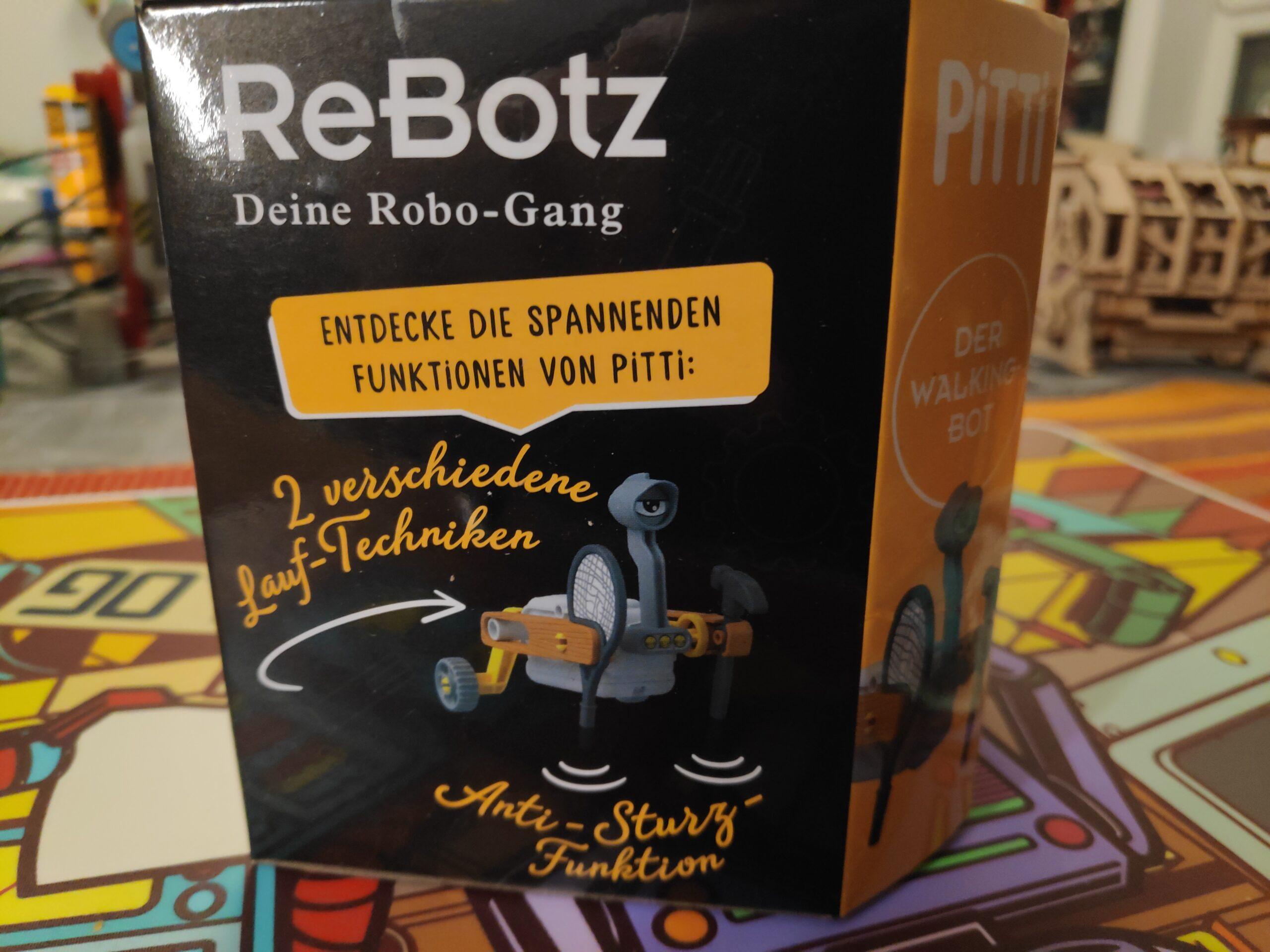
Kosmos ReBotz – Buxy der Jumping-Bot.
So einfach kann es sein, einen eigenen Roboter zu konstruieren! Die kleinen Roboter aus
der neuen Reihe ReBotz sind mit wenigen Handgriffen zusammengebaut. Mit Batterien
versorgt, bringen sie Kinder ab acht Jahren mit Ihren kuriosen Fortbewegungsarten zum
Staunen und mit ihren besonderen Charakteren zum Schmunzeln. Besonders Spaß macht
es, die Körperteile der verschiedenen ReBotz durcheinander zu mischen und so ganz neue
Fortbewegungsmethoden zu erfinden. Auf diese Weise wird die Sammelleidenschaft und
die Lust der jungen Forscherinnen und Forscher am Experimentieren geweckt.
Find the latest News on robots drones AI robotic toys and gadgets at robots-blog.com. Follow us on our Blog Instagram Facebook Twitter or our other sites. Share your robotics ideas and products with us. #robots #robot #omgrobots #roboter #robotic #mycollection #collector #robotsblog #collection #botsofinstagram #bot #robotics #robotik #gadget #gadgets #toy #toys #drone #robotsofinstagram #instabots #photooftheday #picoftheday #followforfollow #instadaily #kosmos #rebotz #buxy #pitti #rusty #duke
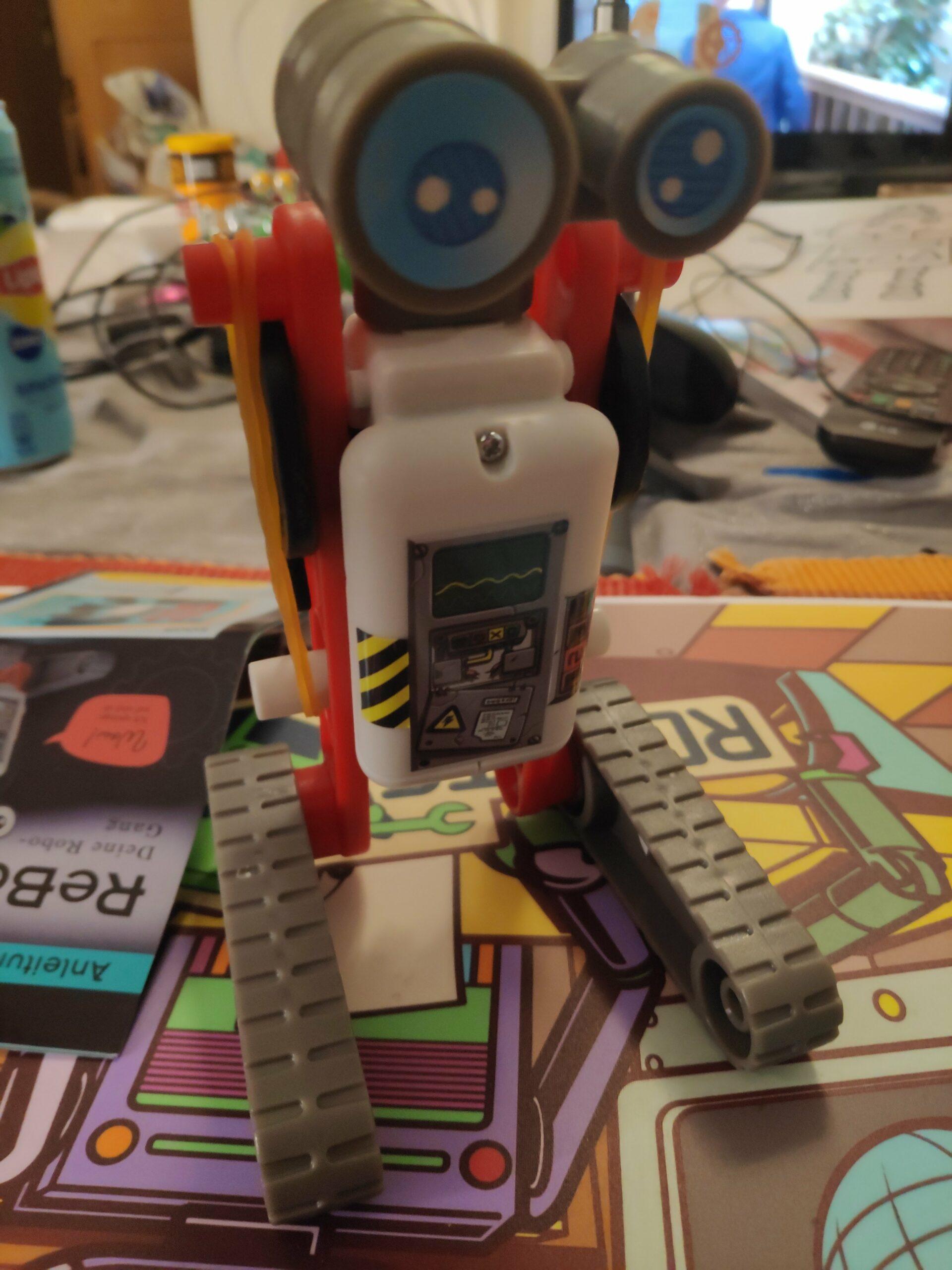
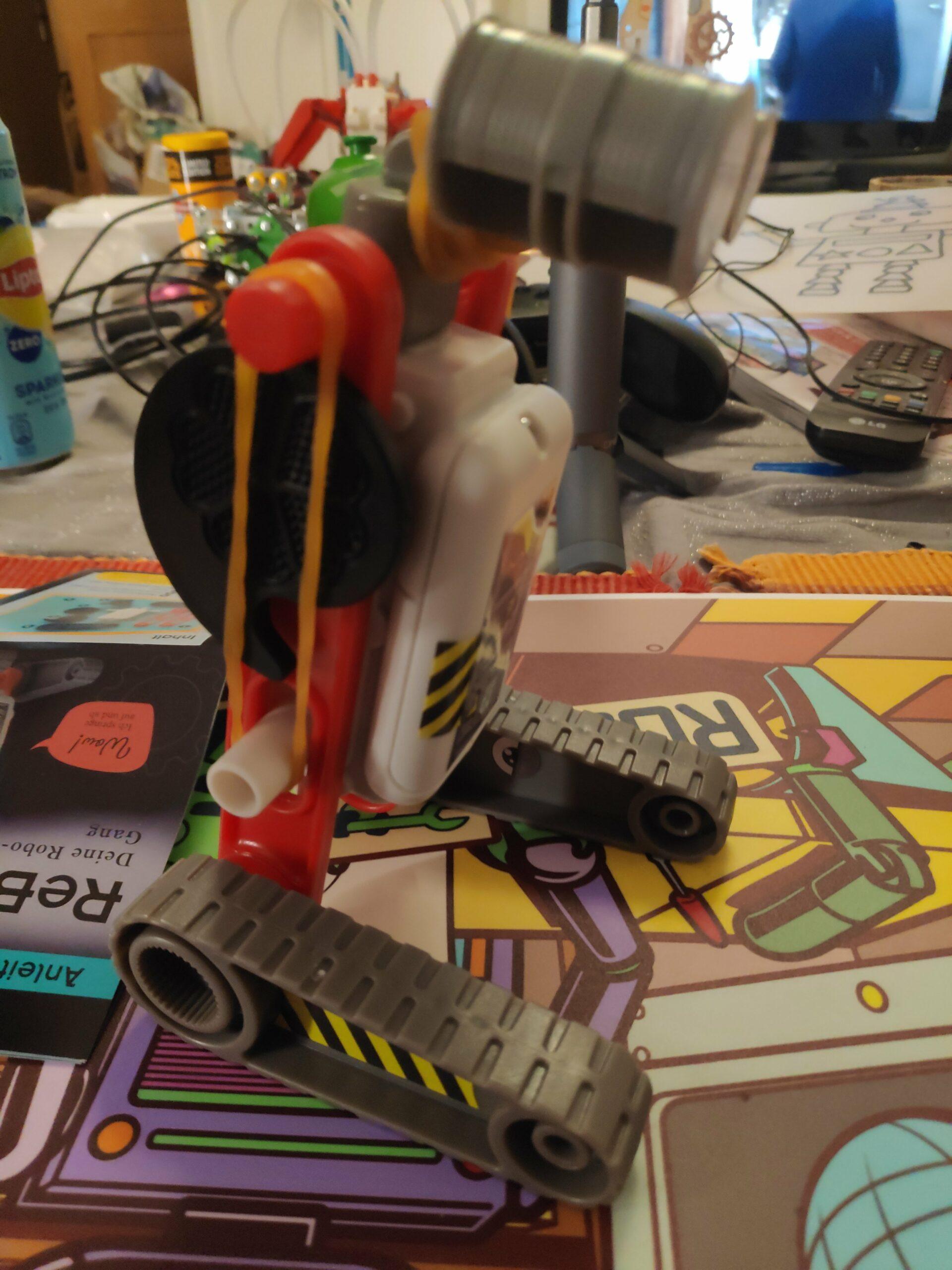

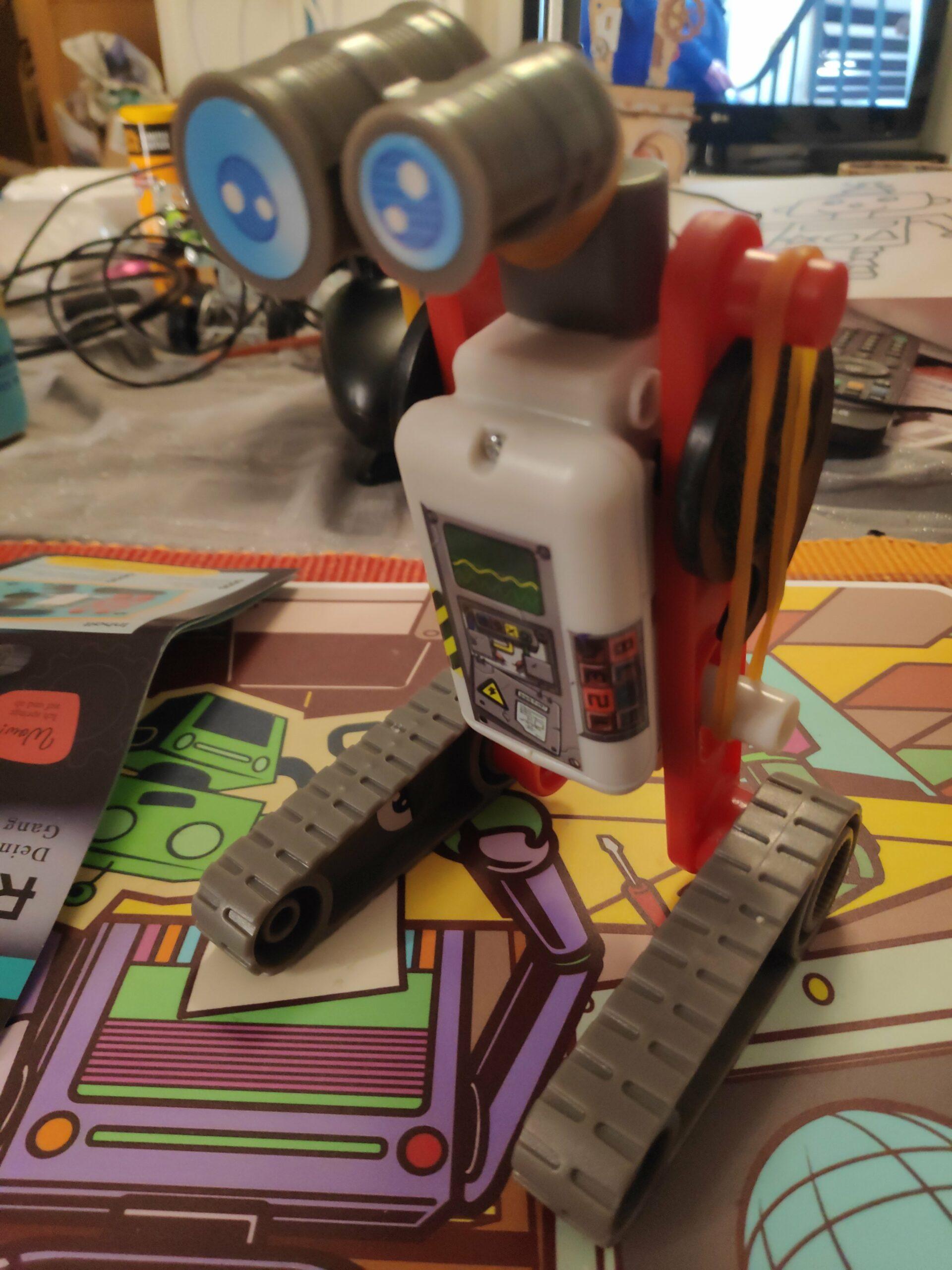
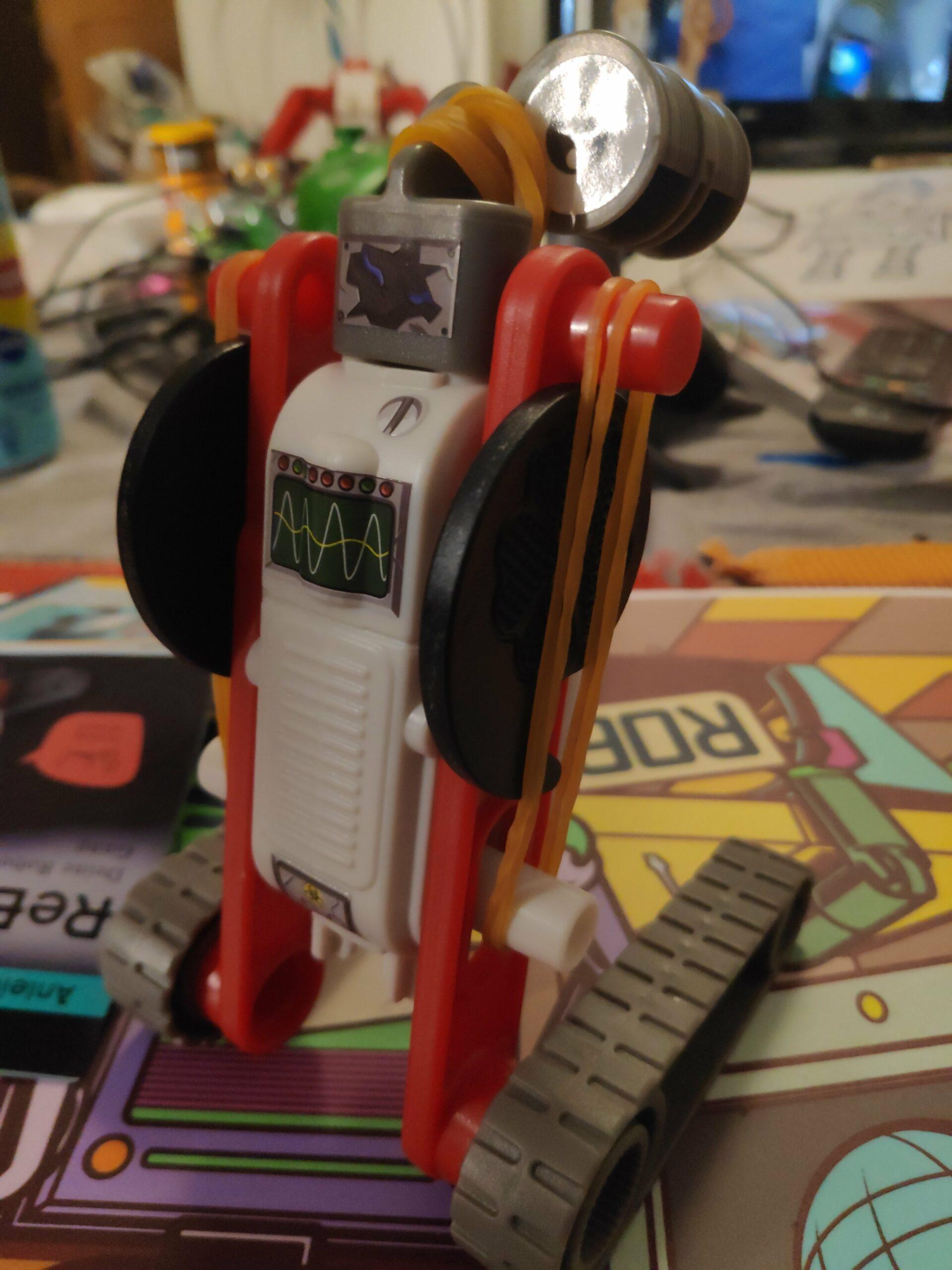
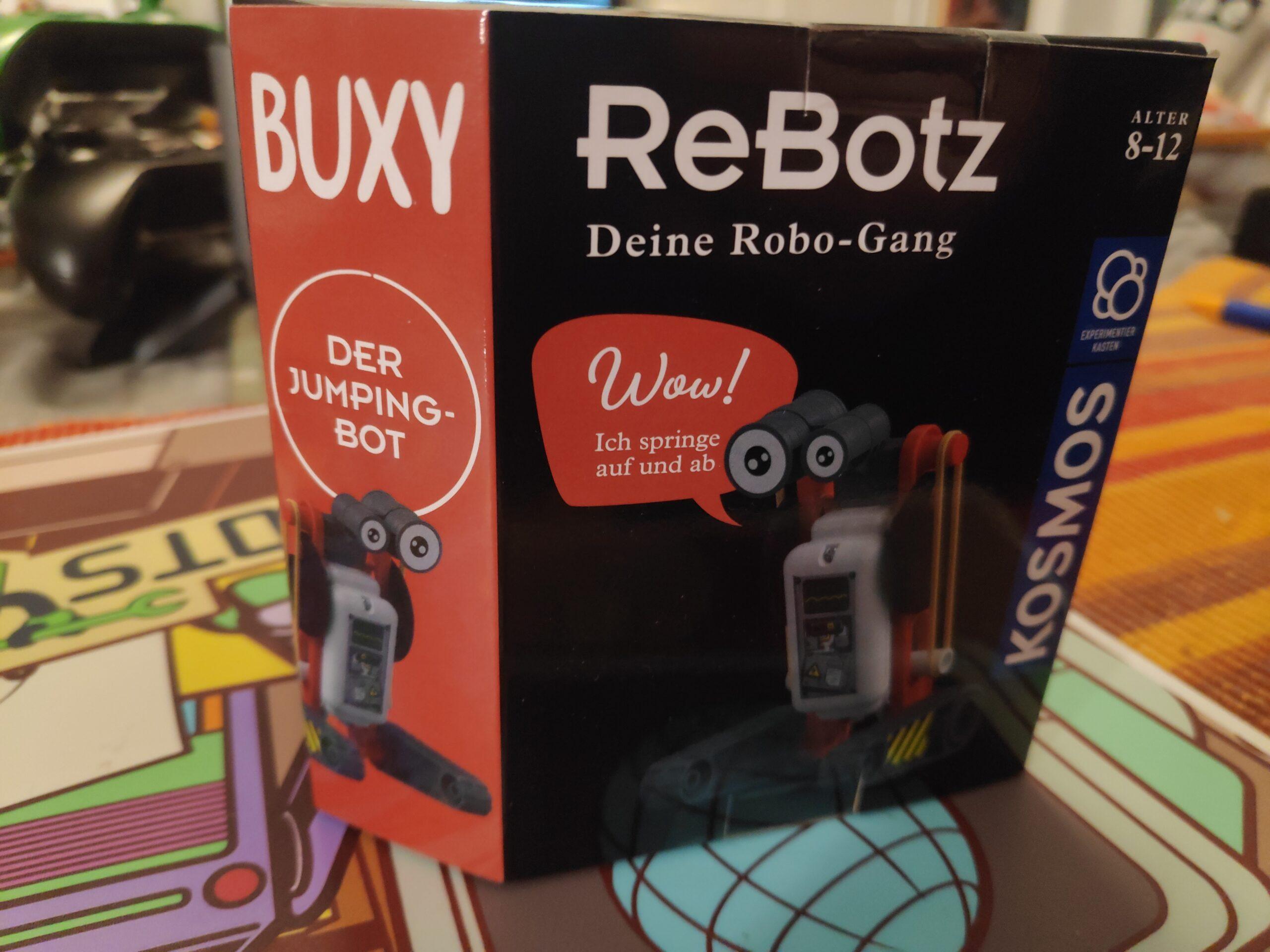
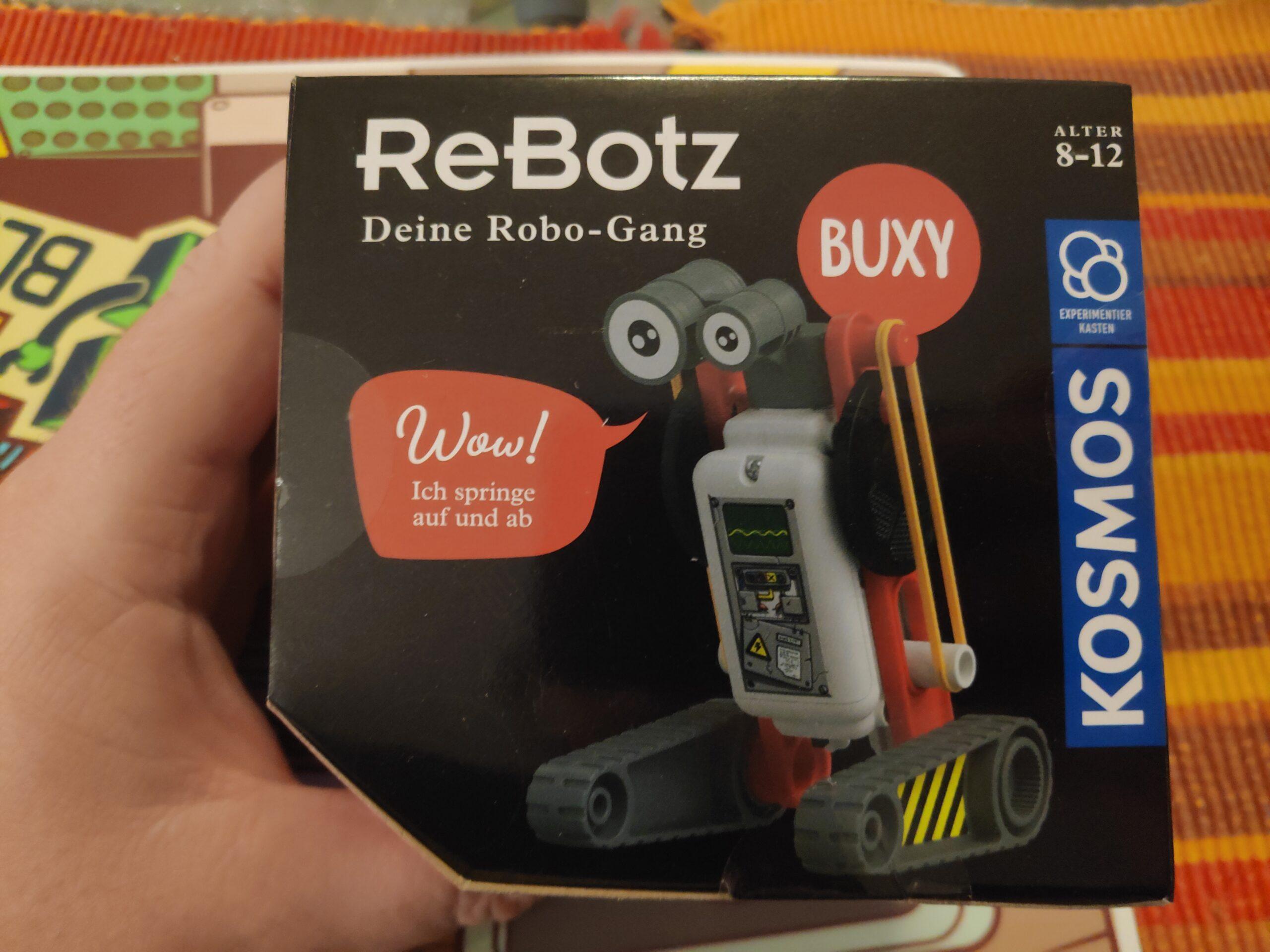
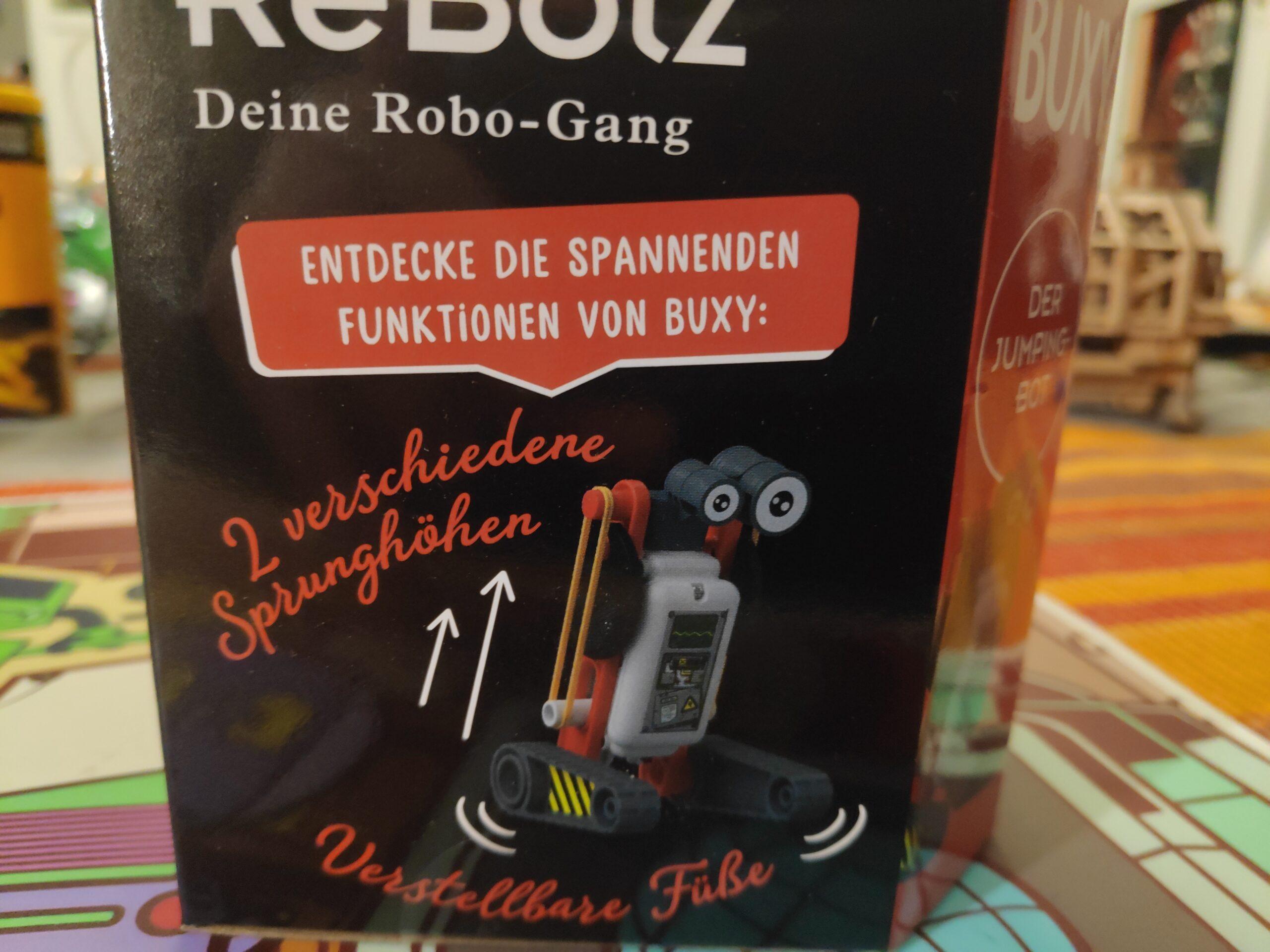
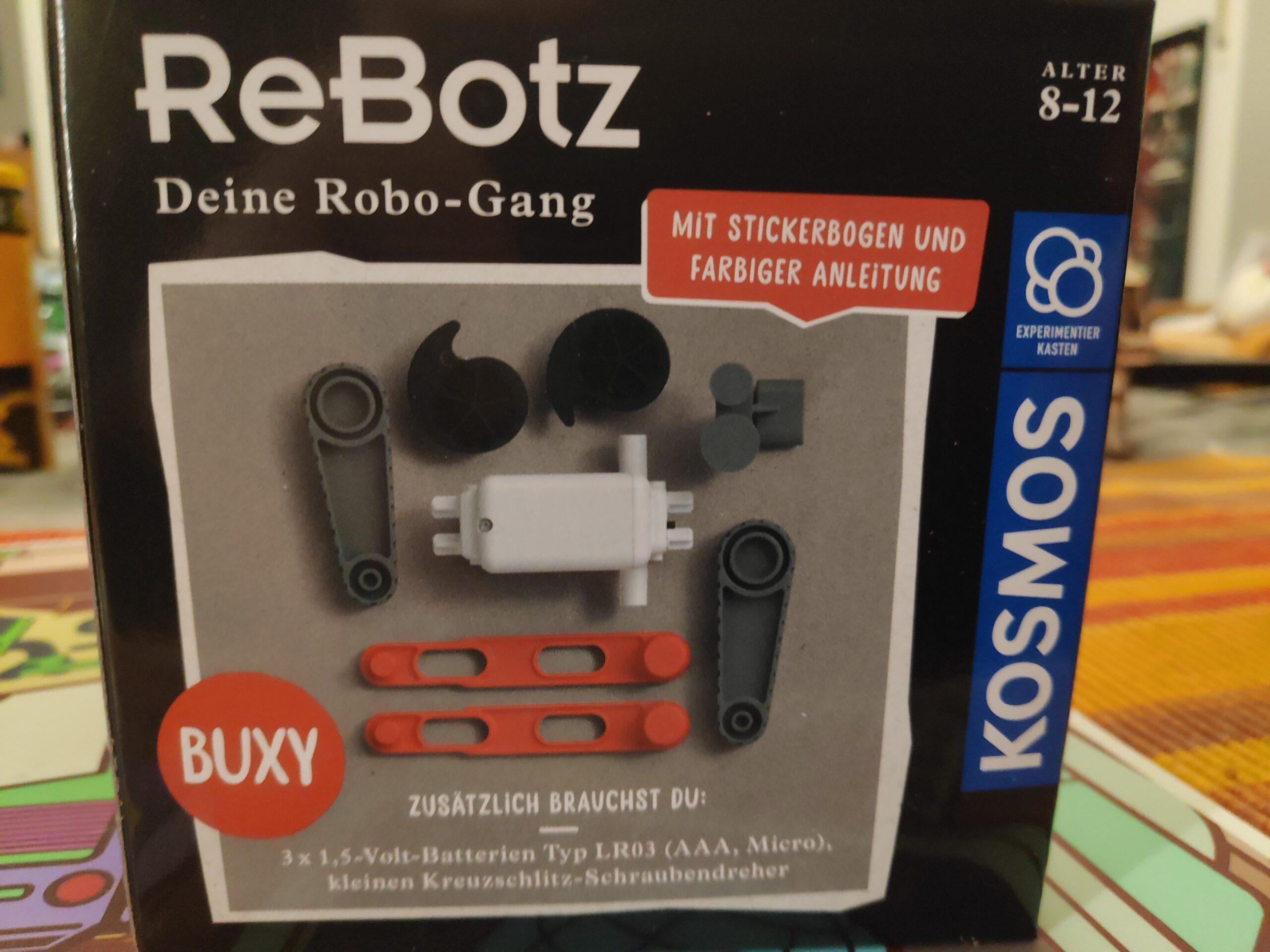
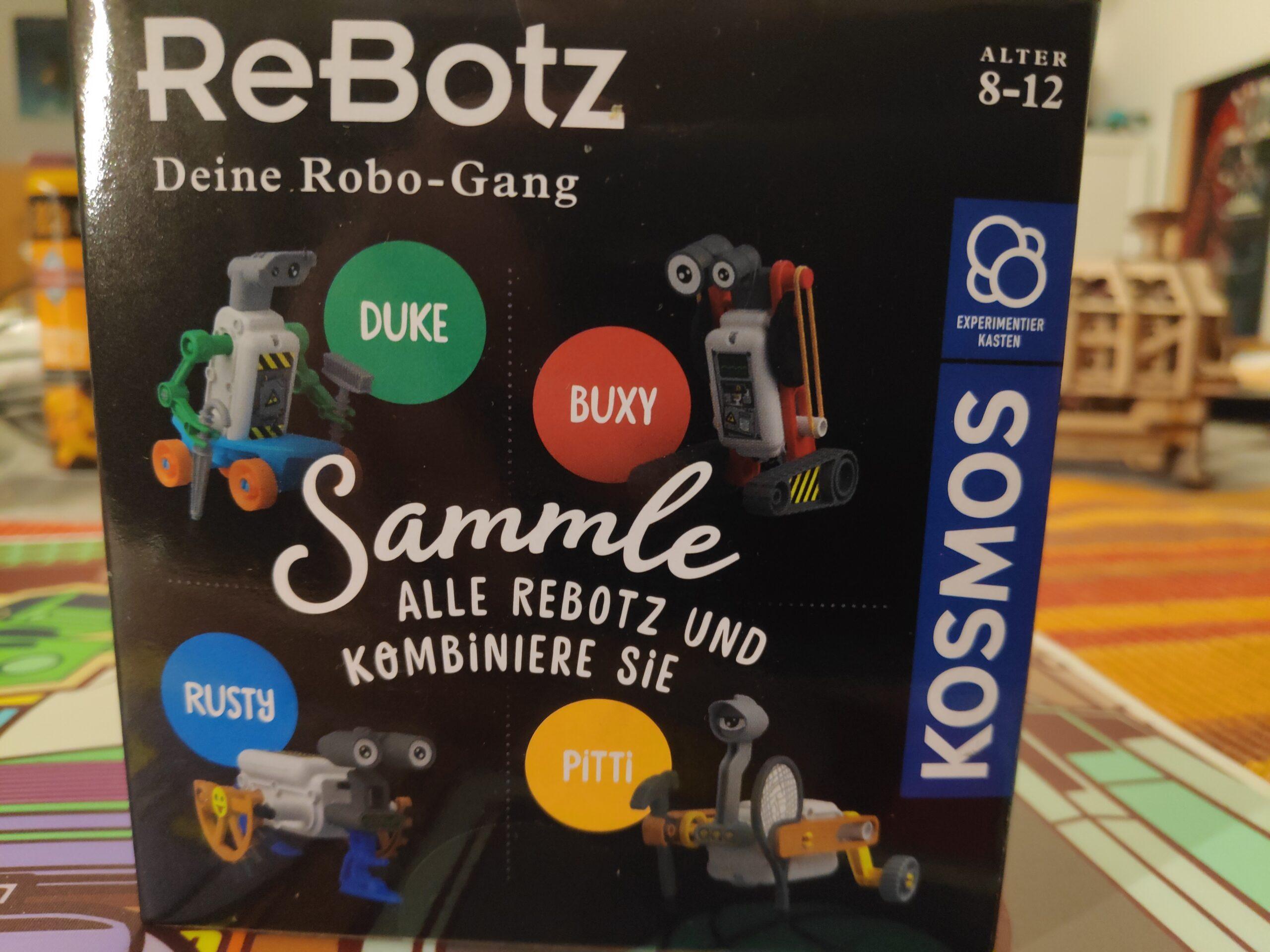
drylin XXL-Raumportalroboter ist bis zu 60 Prozent günstiger als vergleichbare Lösungen und besonders einfach in Betrieb zu nehmen
Köln, 8. Februar 2022 – igus erweitert sein breites Low-Cost-Automation Angebot um einen neuen drylin XXL-Raumportalroboter. Das Portal hat einen Aktionsradius von 2000 x 2000 x 1500 Millimeter und eignet sich besonders für Palettierungsanwendungen bis 10 Kilogramm. Der Roboter ist ab 7.000 Euro inklusive Steuerung erhältlich und lässt sich einfach selbst nach dem Do-it-yourself Prinzip aufbauen und programmieren – ohne Hilfe eines Systemintegrators.

Zu teuer in der Anschaffung, zu aufwendig in der Programmierung, zu kompliziert in der Wartung: Viele kleine und mittelständische Unternehmen scheuen den Einstieg in die Automatisierung. Und gefährden damit langfristig ihre Wettbewerbsfähigkeit. Dabei geht der Einstieg ganz leicht von der Hand. Das beweist der drylin XXL-Portalroboter von igus. Der DIY-Bausatz bietet Unternehmen die Möglichkeit, schnell und unkompliziert einen Pick-and-Place Linearroboter für Aufgaben rund um Palettierung, Sortierung, Etikettierung und Qualitätsprüfung in Betrieb zu nehmen. „Palettier-Roboter, die in Zusammenarbeit mit externen Dienstleistern entstehen, kosten schnell zwischen 85.000 und 120.000 Euro. Das sprengt das Budget vieler kleiner Betriebe“, sagt Alexander Mühlens, Leiter Geschäftsbereich Low-Cost-Automation bei igus. „Wir haben deshalb eine Lösung entwickelt, die aufgrund des Einsatzes von Hochleistungskunststoffen und Leichtbaumaterialien wie Aluminium um ein Vielfaches günstiger ist. So kostet der drylin XXL-Raumportalroboter je nach Ausbaustufe zwischen 7.000 und 10.000 Euro. Eine Investition, die risikoarm ist und sich in der Regel innerhalb weniger Wochen amortisiert.“
DIY-Bausatz lässt sich ohne Vorkenntnisse schnell zusammensetzen
Das Raumportal erhält der Käufer als DIY-Bausatz. Bestandteile sind zwei Zahnriemenachsen und eine Zahnstangen-Auslegerachse mit Schrittmotoren und einem Aktionsraum von 2000 x 2000 x 1500 Millimeter. In der Maximallänge sind auch bis zu 6.000 x 6.000 x 1.500 Millimeter möglich. Zusätzlich ist im Paket ein Schaltschrank, Leitungen und Energieketten sowie die kostenlose Steuerungssoftware igus Robot Control (iRC) enthalten. Anwender können die Komponenten in wenigen Stunden zu einem betriebsfertigen Linearroboter zusammensetzen – ohne externe Hilfe, ohne Vorkenntnisse und ohne lange Einarbeitungszeit. Und werden noch zusätzliche Komponenten wie Kamerasysteme oder Greifer benötigt, so werden Anwender auf dem Robotik-Marktplatz RBTX schnell fündig.
Automatisierung entlastet Mitarbeiter
Zum Einsatz kommt der kartesische Roboter beispielsweise an Förderbändern, die Produkte von Spritzgussmaschinen abtransportieren. Hier nimmt der Roboter Artikel mit einem Maximalgewicht von 10 Kilogramm vom Band, transportiert sie mit einer Geschwindigkeit von bis zu 500 mm/s und positioniert sie mit einer Wiederholgenauigkeit von 0,8 Millimeter auf einer Palette. „Dank dieser Automatisierung können Betriebe ihre Mitarbeiter von körperlich anstrengenden und zeitaufwendigen Palettier-Aufgaben entlasten und Ressourcen für wichtigere Aufgaben gewinnen.“ Das System selbst verursacht dabei keinen Wartungsaufwand. Die Linearachsen bestehen aus korrosionsfreiem Aluminium, die Schlitten bewegen sich über Gleitlager aus Hochleistungskunststoff, die dank integrierter Festschmierstoffe über viele Jahre einen reibungsarmen Trockenlauf ohne externe Schmiermittel ermöglichen – selbst in staubigen und schmutzigen Umgebungen.
Digitaler Roboter 3D-Zwilling ermöglicht kinderleichte Programmierung
Doch nicht nur die Montage, sondern auch die Programmierung von Bewegungsabläufen stellt kein Einstiegshindernis dar. „Für viele Betriebe, die keine eigenen IT-Fachkräfte haben, ist die Programmierung von Robotern oft mit Problemen besetzt“, so Mühlens. „Wir haben deswegen mit der iRC eine kostenlose Software entwickelt, die optisch an häufig genutzte Office Software erinnert und eine intuitive Programmierung von Bewegungen ermöglicht. Das Besondere: die Software ist kostenlos und die so entstehende Low-Code-Programmierung kann dann 1:1 am realen Roboter verwendet werden.“ Herzstück der Software ist ein digitaler Zwilling des Raumportals, über den sich Bewegungen mit wenigen Klicks festlegen lassen. Auch im Vorfeld, bevor der Roboter in Betrieb ist. „Interessenten können vor dem Kauf anhand des 3D-Modells prüfen, ob gewünschte Bewegungen tatsächlich realisierbar sind. Zusätzlich laden wir alle Interessen ein, unsere Roboter live oder über das Internet kostenfrei auszuprobieren. Wir unterstützen sie bei der Inbetriebnahme und zeigen, was alles mit Low-Cost-Robotern möglich ist. Die Investition wird dadurch nahezu risikofrei.“
QUBS (www.qubs.toys) is a Swiss company producing traditionally-designed wooden toys with hidden high-tech magic: liberating children to explore their imagination, safely learn future skills and engage in educational, screen-free fun.
Inspired by the Montessori method, QUBS STEM toys educate as well as entertain. Playing with QUBS toys provides children, through play, with developmental skills in science, technology, engineering, and mathematics.
Loved by parents, teachers and, most importantly, young users (3 to 12 years), QUBS’ intuitive, gender neutral toys – made from responsibly sourced and long lasting beechwood – contain patented technology which brings them to life. Unlike other tech-enabled STEM children’s toys, QUBS’ toys have an eternal shelf life, do not require updates nor access to the internet, and are completely screen-less, empowering children to become creators, rather than passive users of laptop or smartphone screens.
Each block and toy component contains a QUBS-developed and patented version of RFID (Radio Frequency Identification) technology (the innovation most commonly-used in contactless payments and key fobs). RFID technology is 100% safe and secure for children and grown-ups, allowing the individual tiles and blocks to interact, all within their own secure universe.
QUBS’ first product, CodyBlock- to be showcased at Nuremberg Toy Fair – Spielwarenmesse Digital (where it has been shortlisted for the prestigious annual ‘Toy Award’) – features an independently-moving car (Cody), whose journey changes in response to a child’s placement and arrangement of wooden blocks within its environment. Encouraging creativity and teamwork, Cody Block introduces children to computer programming concepts, robotics, and the Internet Of Things through fun and accessible play.
Learning computational skills in early years is essential. Cody the car, and the wooden toy blocks which shape his journey, teach kids to think like a programmer: being introduced to principles of debugging (the process of identifying a problem and correcting it) and sequencing (the specific order in which instructions are performed in an algorithm) through physical play.
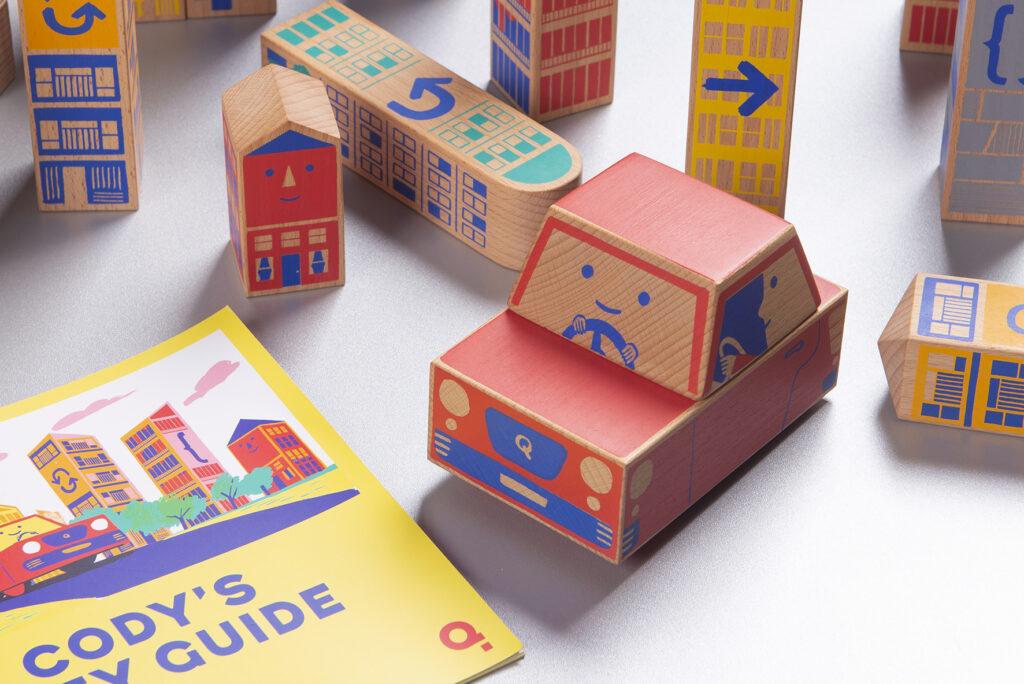
The task is to plan a path that leads Cody through the city and back home, his movements changing in response to the child’s arrangement and rearrangement of the wooden blocks (each containing RFID tech). Each block denotes a different directional command (e.g. ‘turn left’, ‘turn right’, ‘u-turn’ etc.), creating a sequence of instructions. This allows children to improve their motor skills, critical thinking, creativity and spatial awareness.
Cody Blockis designed for kids aged 3-12, and will be available to ship in Q2 2022.
QUBS’ second product, MattyBlock, is designed for ages 3-9, it helps children develop self confidence in mathematics by introducing the concepts of addition, subtraction and multiplication.
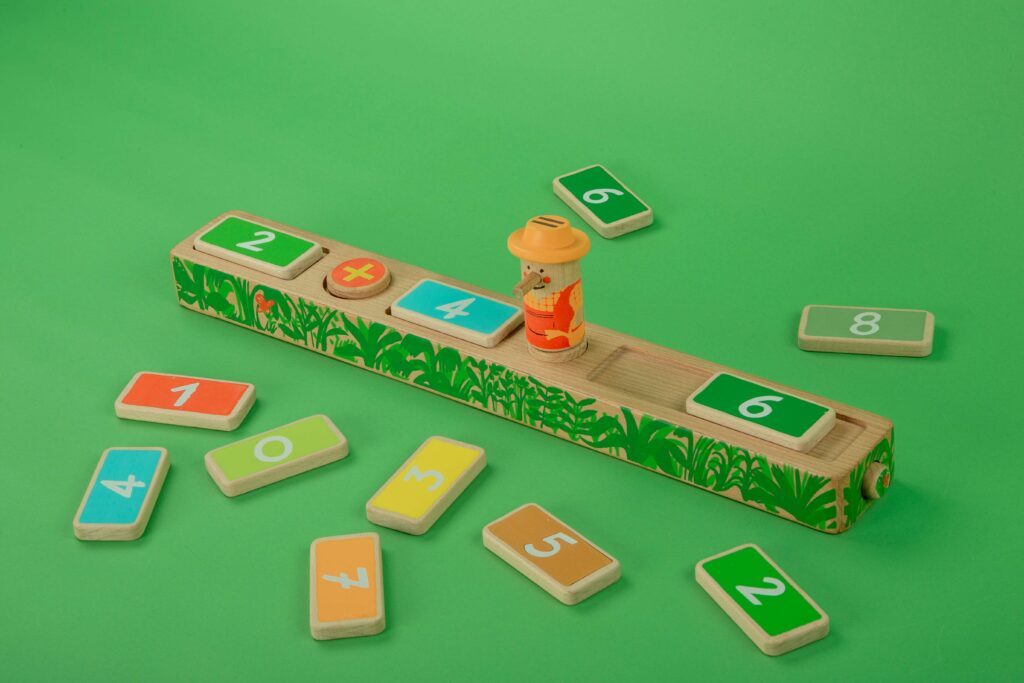
Children place Matty the farmer on a board above a sum of their own creation, formed by numbered tiles (representing seeds). With a nod or shake of his head, Matty guides young users to the right answer to the sum. MattyBlockfeatures voice feedback in six languages (English, German, French, Spanish, Italian and Mandarin), making it the perfect tool for children to play and learn autonomously. Its story setting provides a fun and comprehensive introduction to numbers and equations, while exploring the delicate and ever-changing world of nature.
Matty Blockwill be available in 2023.
Based in Zurich, Paris and London, QUBS Toys was founded by Hayri Bulman in 2019, a Swiss entrepreneur with over 30 years of IT expertise, working for GE (General Electric) and Xerox. Hayri’s own fatherhood, passion for wooden toys and firm grasp of technology motivated him to create QUBS to better equip the future generations for the digital world. Inspired by the toy company TEGU in 2015, Hayri sought out to merge classic wooden toys with modern technology and soon started working on concepts that combined RFID technology with wooden blocks. Since then, QUBS has expanded into a vast team of designers, engineers and creatives from all across Europe.
In April 2020, at the very beginning of the global pandemic, QUBS raised CHF 88,887 (~£70,000) by 503 backers during a Kickstarter campaign.
QUBS Toys will be available for purchase online from www.qubs.toys, as well as from major stockists.